Koalas have a reputation for being one of the cutest and cuddliest creatures on earth; however, they are anything but. They are found in the eucalyptus forests of eastern Australia. They have grey fur with a cream-colored chest and powerful, clawed feet. Koalas grow up to be big eaters. They are sure to only select the most nutritious and tastiest leaves from the trees where they live. These creatures of the night – and yes, they are nocturnal – will pee on you as fast as look at you, and they might give you an STD in the process!
People frequently refer to them as “koala bears,” but koalas are not related to bears. They are marsupials, a type of mammal whose females carry their young in a front pouch. Their offspring are referred to as joey. When they are born, a joey uses its strong sense of smell and touch to find its way. A joey can grow and develop in the pouch for about six months. After that, they ride around on their mother’s back for another six months. However, in many ways, bears may be friendlier! Read on to learn more about these terrifying creatures that are much less cuddly than you may like to think.
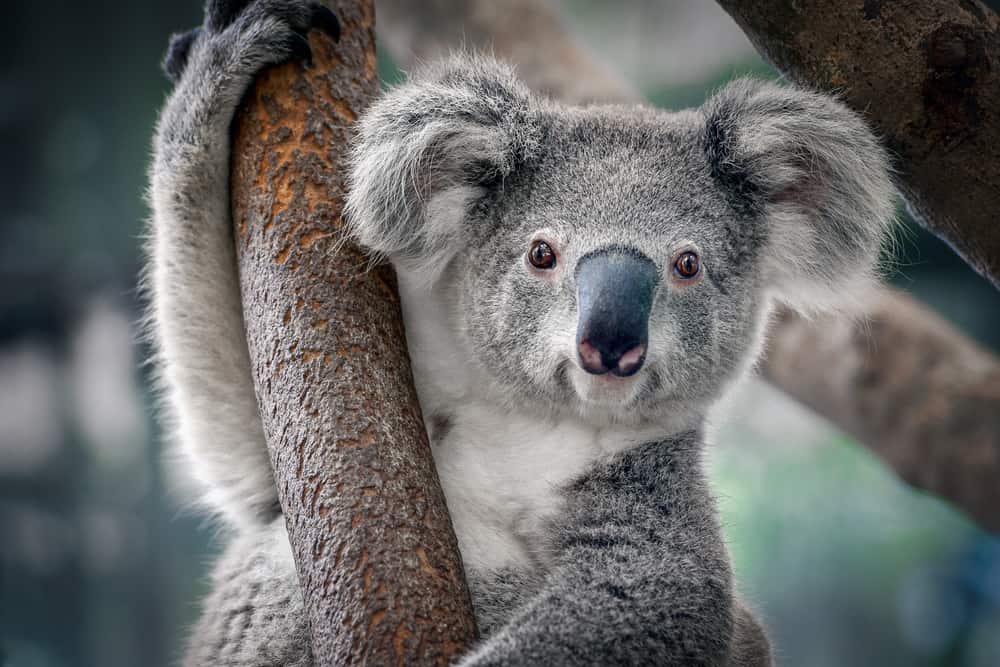
30. Koalas Are Incredibly Lazy
If you ever happen to come upon a koala, you probably won’t do so with the creature swinging through the trees like you may have seen in the movies. The koala will probably be asleep, as the marsupials sleep for as much as 18 to 22 hours a day! Koalas are known for their laziness and sleeping abilities. As they spend sleeping, they are only awake for two to six hours a day. It means that they sleep even more than cats, who sleep for only about 16 hours per day. They are some of the laziest creatures in the world.
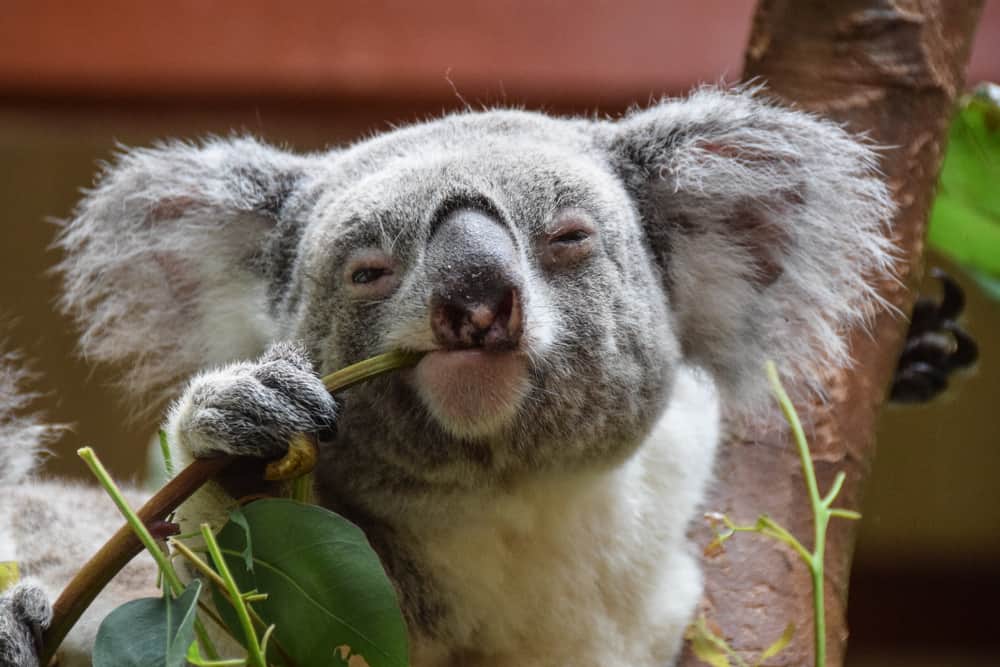
Their diet is to blame for their sleepiness, though. The eucalyptus leaves contain toxins that are very high in fiber. The koala’s digestive system has to work extremely hard to digest it. The process involves breaking down the toxins and extracting the limited nutrients. They get very little energy from their diet, which is why they tend to spend the majority of their time sleeping. They are more lethargic even than sloths, which sleep as much as cats do. You would be hard-pressed to find a teenage boy on a weekend who sleeps as much as koalas do.
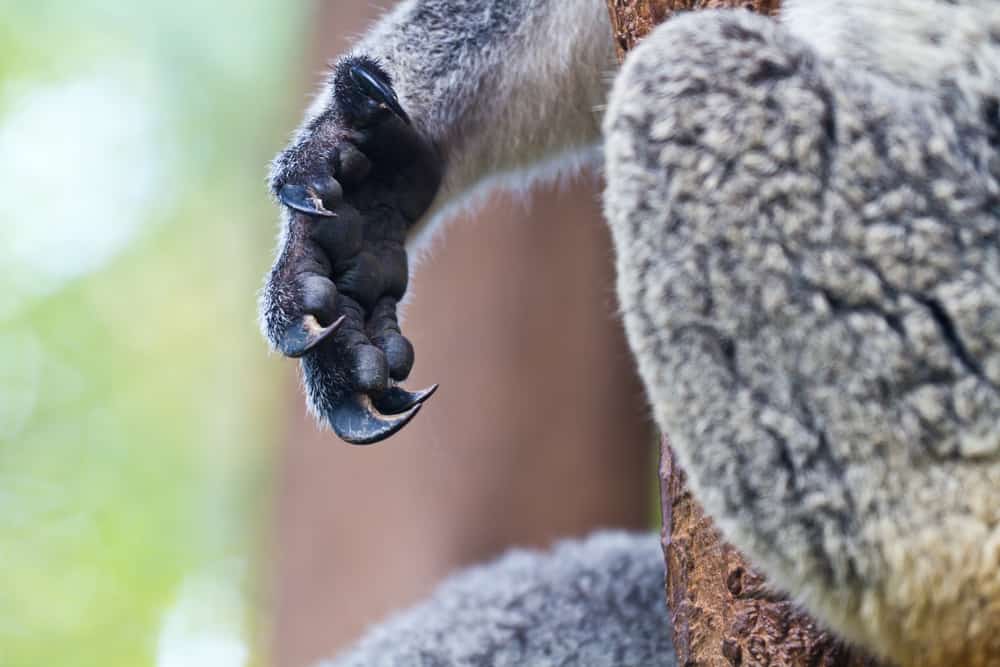
29. Koalas Have Not One But Two Thumbs
Imagine what would happen if cats had thumbs. They would be able to terrorize their owners and quickly take over the world! However, though not as cunning as cats, koalas might be harboring the same plans for world domination. Opposable thumbs are great. Humanity owes a lot of its functionality and accessibility to this finger joint’s pivoting ability, and without it, we would be constrained. However, koalas have one-upped us all! They do have thumbs, unlike our feline friends. They have two on their front paws! Not only are their thumbs opposable, but they have sharp claws on the ends.
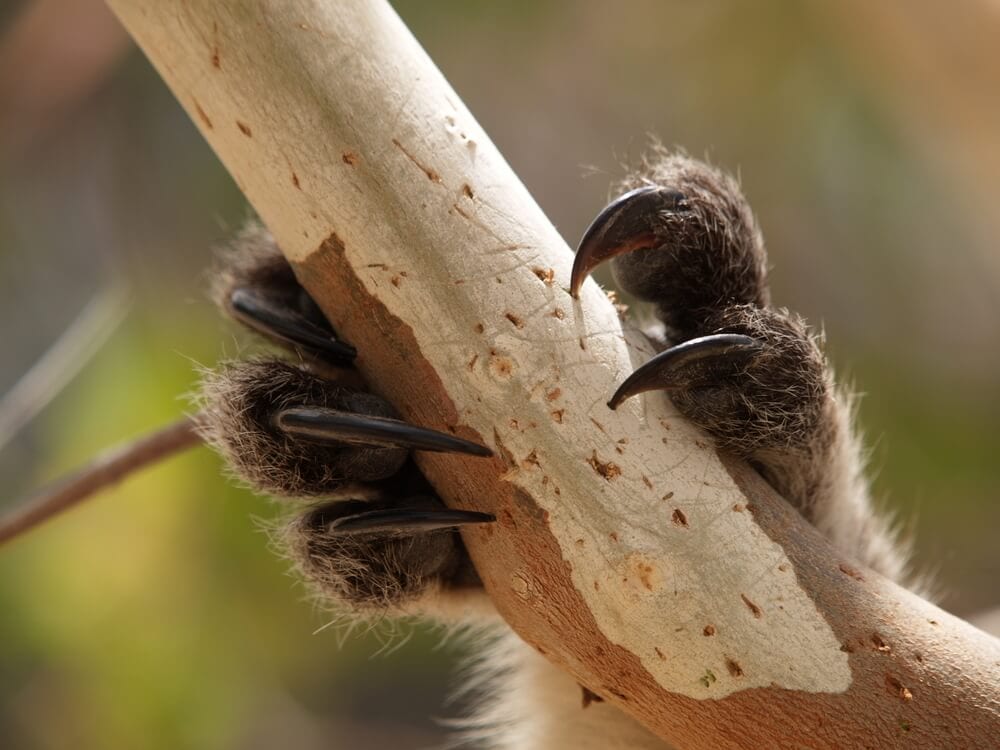
Koalas use their two opposable thumbs on each paw to climb about the eucalyptus trees. Along their journey, they will munch on the leaves as they go. Their feet are pretty unique too. They have two toes on each of their back paws that are fused. This default comb is what allows them to groom their fur and maintain an immaculate appearance successfully. If they were just a little bit cleverer, then they might be able to take over the world. Let’s hope that they don’t get into cahoots with cats because then their plans very well might succeed.
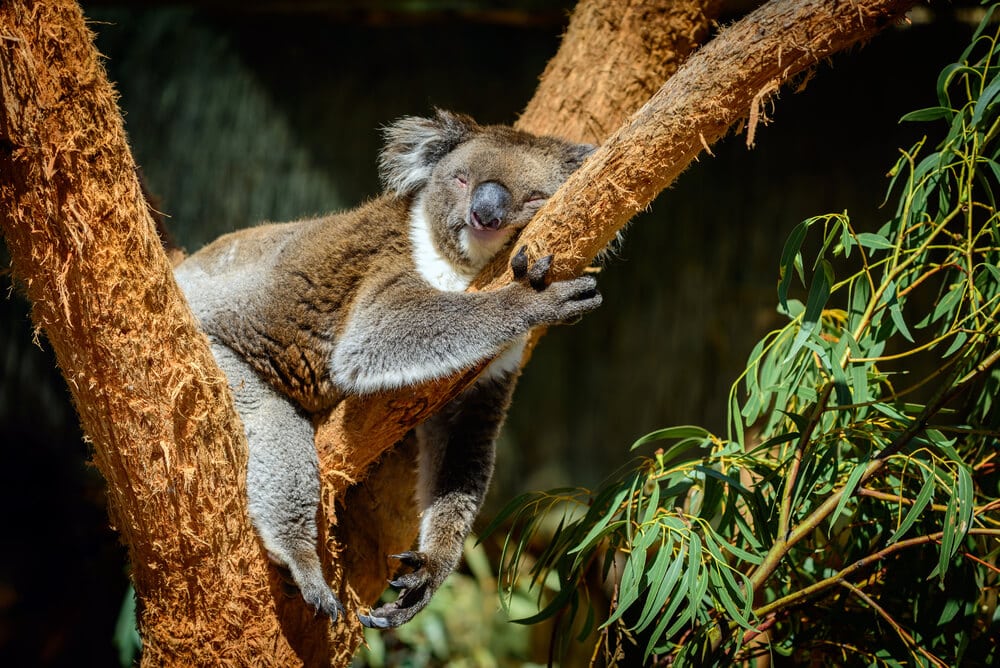
28. Koalas Don’t Get Drunk, Because They Don’t Drink Anything
There is a common myth about koalas that they sleep so much because they are continually getting drunk off of the eucalyptus leaves that they eat. However, koalas don’t get drunk, high, or anything else related to their diet. They are pretty much incapable of getting high or drunk. Koalas don’t drink anything! The name “koala” comes from the Aboriginal word that means “no drink.” Moreover, they are impervious to the toxic effects of the eucalyptus leaves. They don’t do much of anything except eat eucalyptus leaves and sleep. However, you might be wondering how they can survive without water.
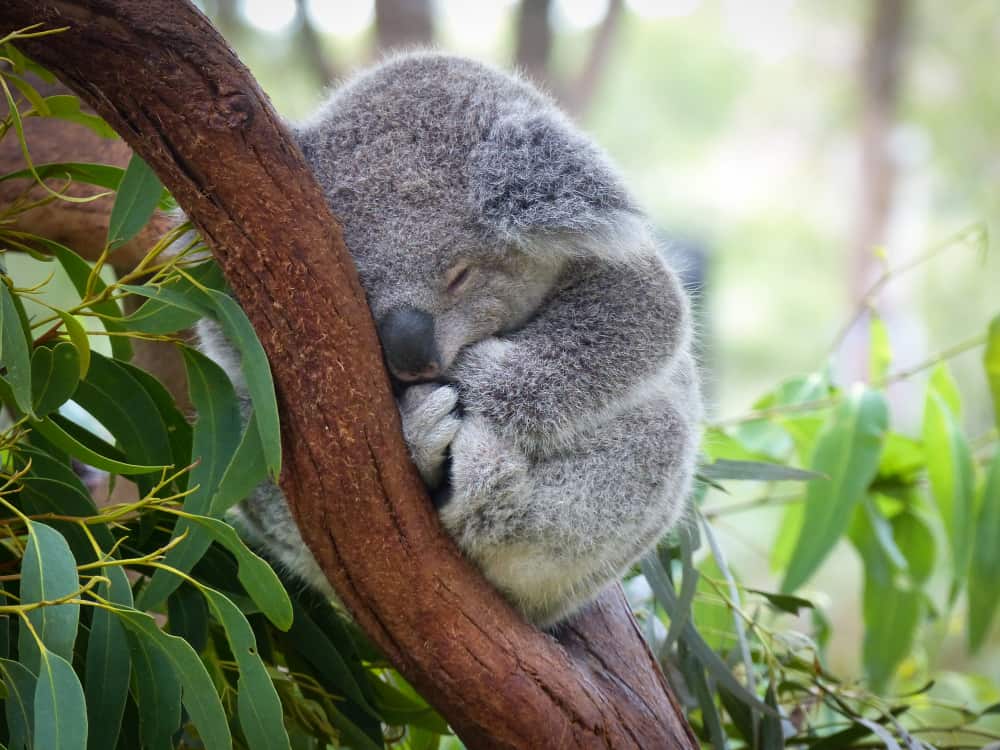
Scientists have solved a long lingering mystery about koala behavior. It involves how these tree-dwelling animals that are native to Australia consume enough water to live. One study suggests that they lick the water running down the smooth surface of tree trunks during rainfall. That would indicate that they do not rely merely on the water content of the leaves that make up their diet. It was initially thought that they gained the majority of the water they require from the moisture content in the leaves they feed on and unintentionally ate wet leaves after rainfall.
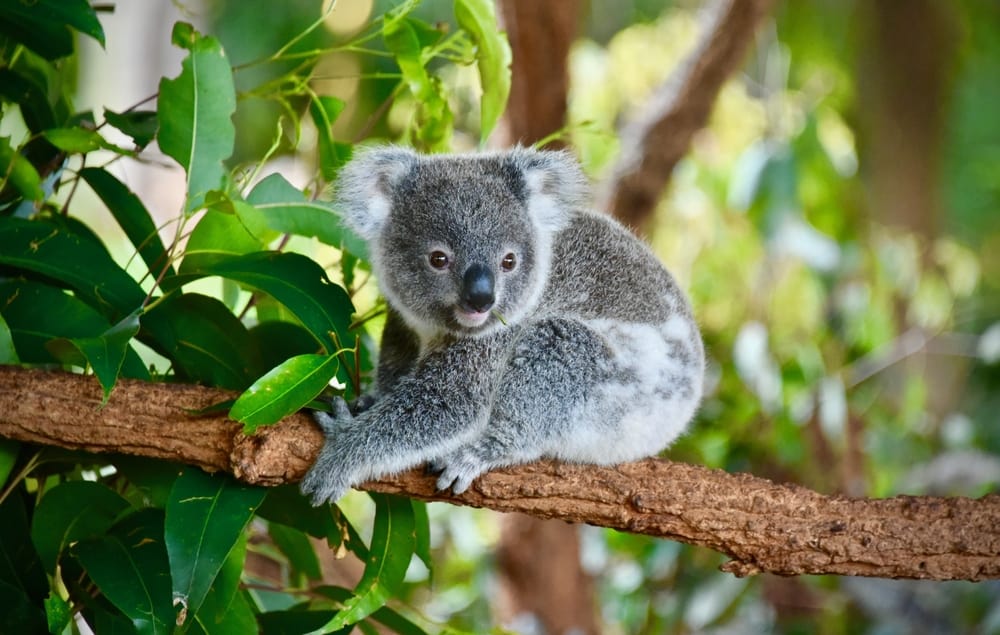
27. They Are Infected With Chlamydia
Chlamydia is a sexually transmitted disease that can cause plenty of unpleasant symptoms among its hosts, human, marsupial, or anything else. So in the past few years, there has been a massive outbreak of chlamydia among Australia’s koala population. In fact, about half of Australia’s koalas are infected with the STD. When koalas contract it, they develop a condition known colloquially as “dirty tail,” in which their urinary tracts become so inflamed that it can be fatal. To make things even more disturbing, they can pass chlamydia on to humans without any direct contact. You have to touch their pee to contract it.

Chlamydia is no joke to koalas. While it is not always fatal, the disease has been shown to impact a koala’s health significantly. It frequently leads to blindness, severe bladder inflammation, and death. Where possible, it might seem like a great idea to treat them with antibiotics. However, antibiotic treatment could create further problems by upsetting their gut microbes and making it extremely difficult to digest the eucalyptus leaves that are a staple in their diet. Although chlamydia has sickened koalas for decades, it has long been unclear why they are so vulnerable
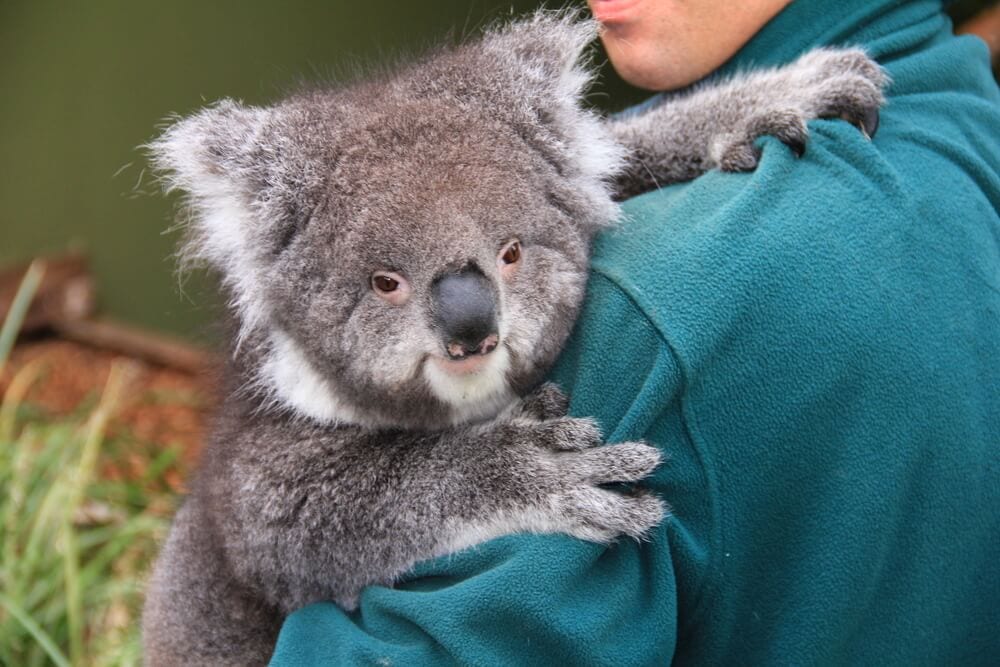
26. Koalas Will Pee On You
Do you think it’s improbable that you will contract chlamydia from a koala? If so, you might want to think again. If you go walking around through the eucalyptus forests of Australia in search of these nasty little marsupials, they just might pee on you. And in doing so, give you chlamydia. Many people enjoy picking these seemingly furry creatures up, but like many tree-dwelling animals, koalas don’t care where they urinate. If an infected koala urinates on a person, it can transmit the strain of chlamydia to the human. Can you imagine trying to explain that one to your doctor?

In fact, back in 2012, two members of the band One Direction, Harry Styles and Liam Payne, were visiting Australia and stopped in to see a three-year-old koala named Kat. Kat didn’t care how famous they were; he peed on both of them. When the musicians learned afterward that they could contract chlamydia from the urine attack, the boys lamented that they would have avoided the koala altogether had they known. With approximately 80 percent of Australian koala bears carrying the disease, Harry and Liam were fortunate to have dodged that bullet! Keep in mind if you plan to visit and interact with a koala that they tend to urinate much more during the winter seasons.
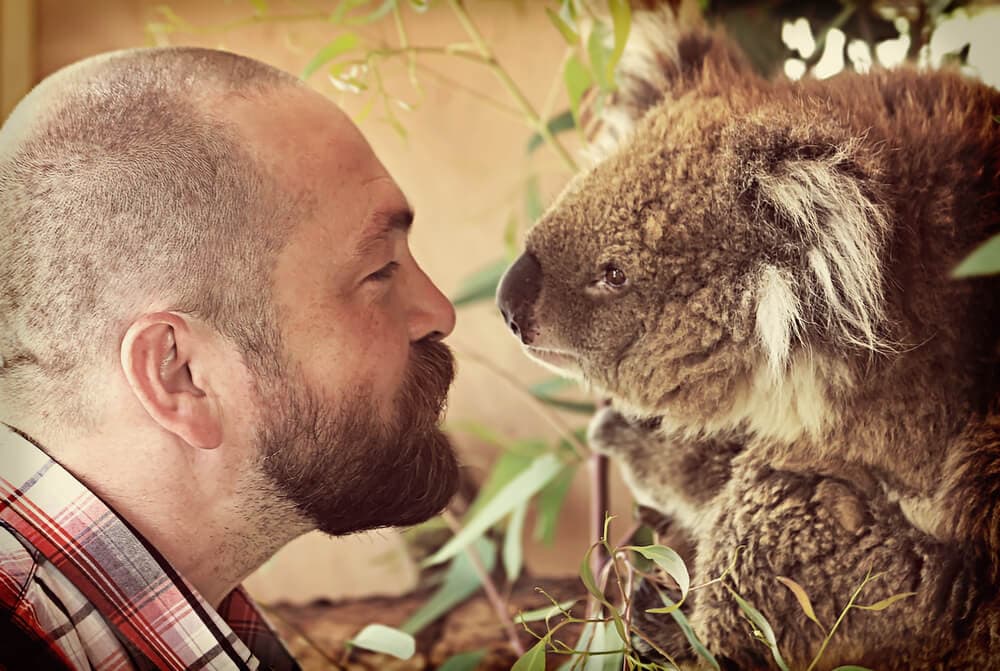
25. Koalas Are Quite Antisocial
Koala habitats are composed of “home trees” that they don’t stray too far from. That area makes up what is known as the home range, and there is only one koala to each home range. You might be surprised to learn that they don’t like to be around each other. Unless, of course, they are breeding. Then, all the rules of antisocial behavior go out the window, and they will invade anyone else’s territory in the hopes of finding the perfect mate. However, you would be antisocial if people knew that you might pee on them and give them chlamydia.
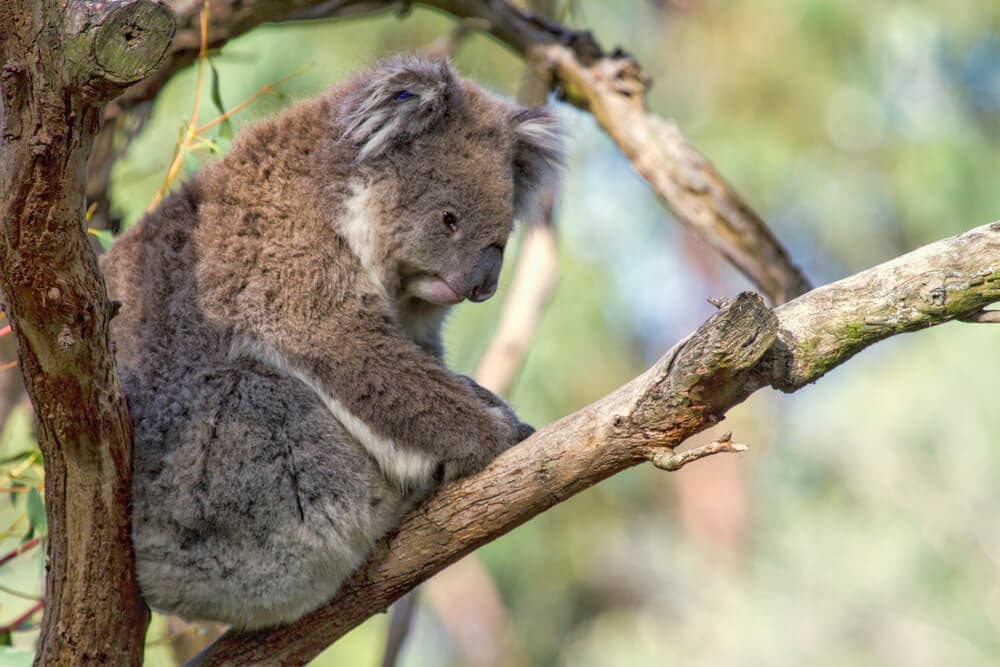
Koalas are not social animals in the slightest. They tend to make every effort to avoid or ignore the other colony members, except for the breeding season. However, they do have overlapping territories where some trees may be shared. Now and then, koalas might meet in a shared tree. Even during these rare moments, there is very limited, if any, interaction between the two. They might even be as close as one branch away from each other and still never bother to look at or acknowledge the other, like strangers on a subway train.
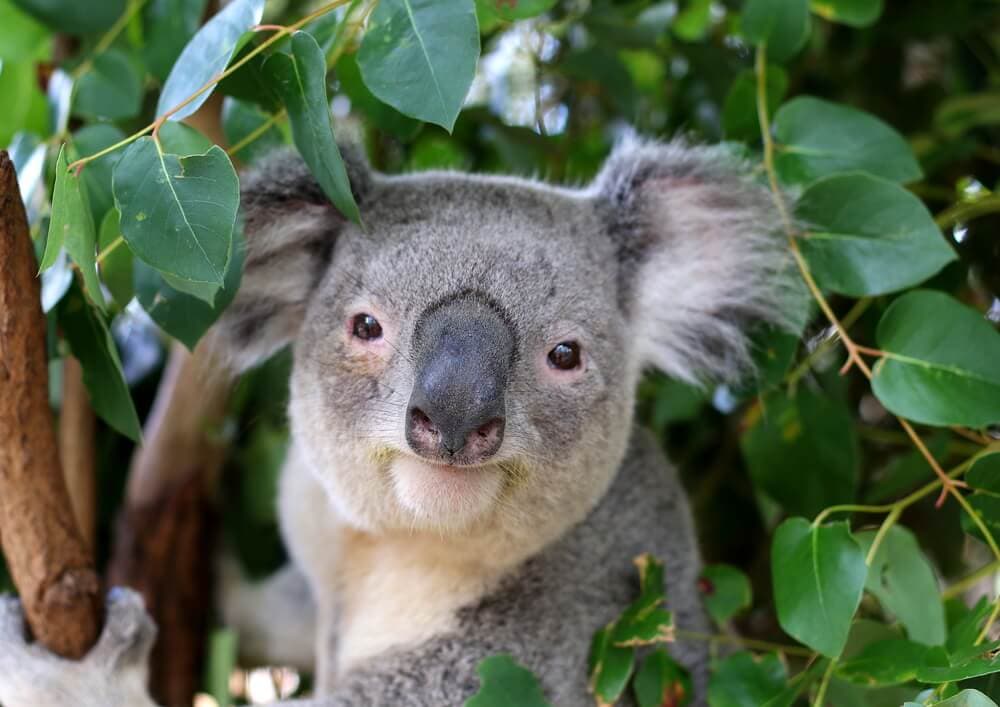
24. Koalas Have A Rigid Social Hierarchy
Koala home ranges don’t get distributed equally on some “first come, first serve” basis. They have a social hierarchy for determining who gets the prime real estate. Many factors contribute to this hierarchy. Age, sex, and social position are critical in deciding who gets the best and biggest home range. Maybe you’re thinking that humans are just primal for having the same kind of social hierarchy as koalas for deciding who gets to live where. However, koalas have been around for a lot longer than humans. They have been doing this for much longer than we have.
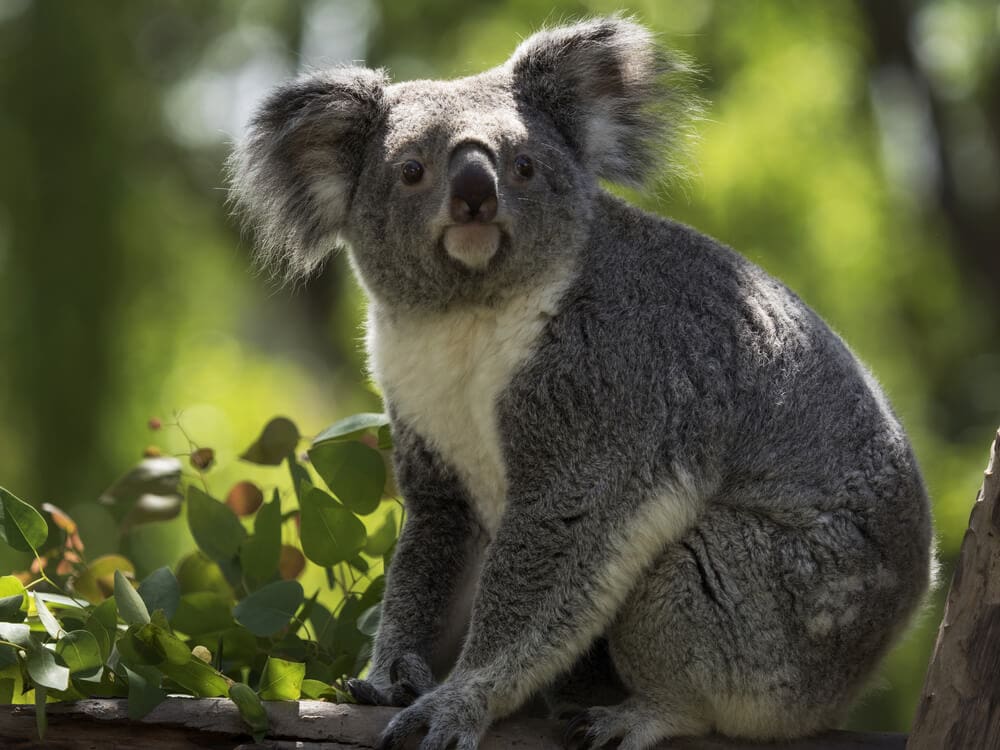
Koalas have intricate social structures. Unlike public beliefs, they are not migratory animals but fiercely territorial. The home range of each animal fits together like a jigsaw puzzle. A home range can consist of several home range trees and food trees, comprising the individual koala’s long-term territory. Within a socially stable group, individual koalas’ home ranges often overlap with those of their neighbors. The shared, overlapping trees house the majority of social interaction and are essential trees. Although not as apparent to the human eye, koalas can tell whether a tree belongs to another koala or not.

23. Koalas Have Stink Glands to Keep You Out Of Their Territory
Koalas are not highly interactive, but they are incredibly territorial. Male koalas have white patches on their chests. These patches are known as scent glands, but they are perhaps better known as stink glands. Mature males use these glands to emit a dark, smelly substance on any other koalas that might intrude on their territory. So there you have it. These nasty, evil little creatures enforce their social hierarchy and self-imposed isolation by spraying on each other, not unlike how a skunk may spray on anything in its path that may alarm it. Are you starting to change your mind about how cute they are?
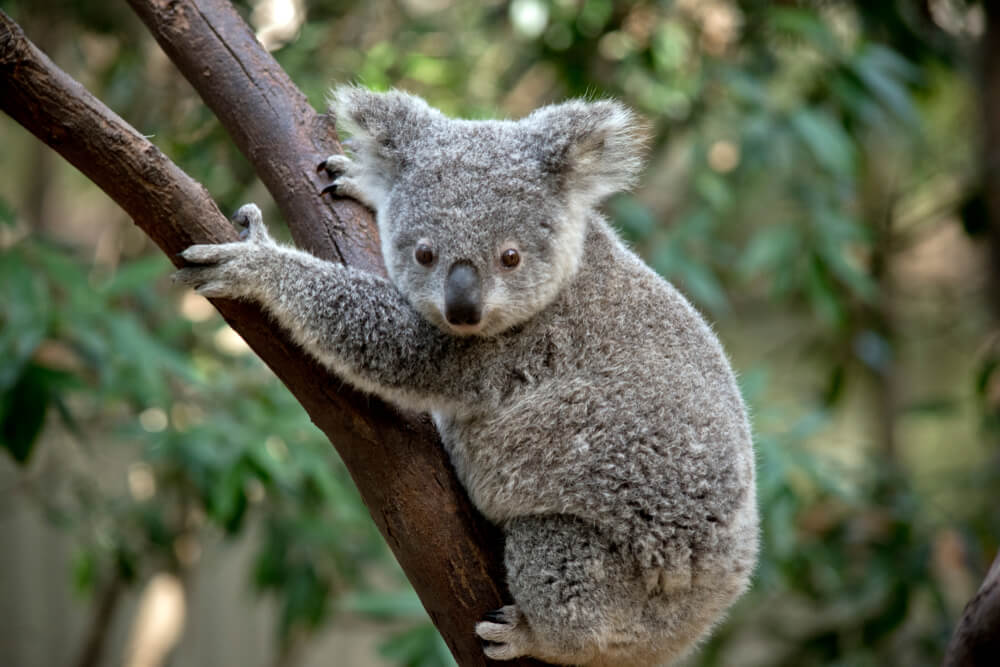
The strong-smelling oily substance can be rubbed against trees to act as a marker for other koalas. The scent gland even appears to change over the koala’s life and over the course of a year. The scent glands in younger males appear to be smaller and to grow as they approach maturity. As the glands are ever-changing, they develop in different ways. Scent glands can appear dry at times and oily at other times. Different koalas have various shaped scent glands. Some of them are long, thin, and have a central crease. Others have an oval or keyhole-shaped gland.
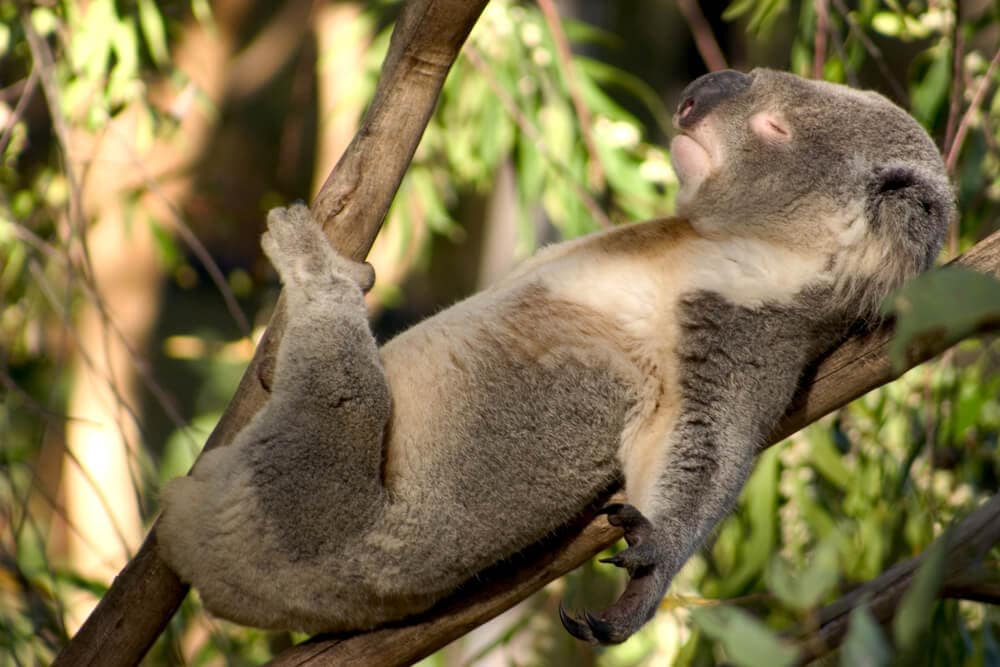
22. Koalas Communicate By Belching
For creatures that look so cuddly and snuggly, you might expect that they make cute little soft, warm sounds to each other. But if you have ever heard a koala make its characteristic call, known as a bellow, then you know otherwise. A bellow is a loud snore that is followed by a belch. The sound is far from appealing and might scare anyone off! The roar is just one in the koala’s arsenal of sounds, and I mean arsenal. If you are uninitiated by the sounds that a koala makes, then hearing them might scare the daylights out of you.
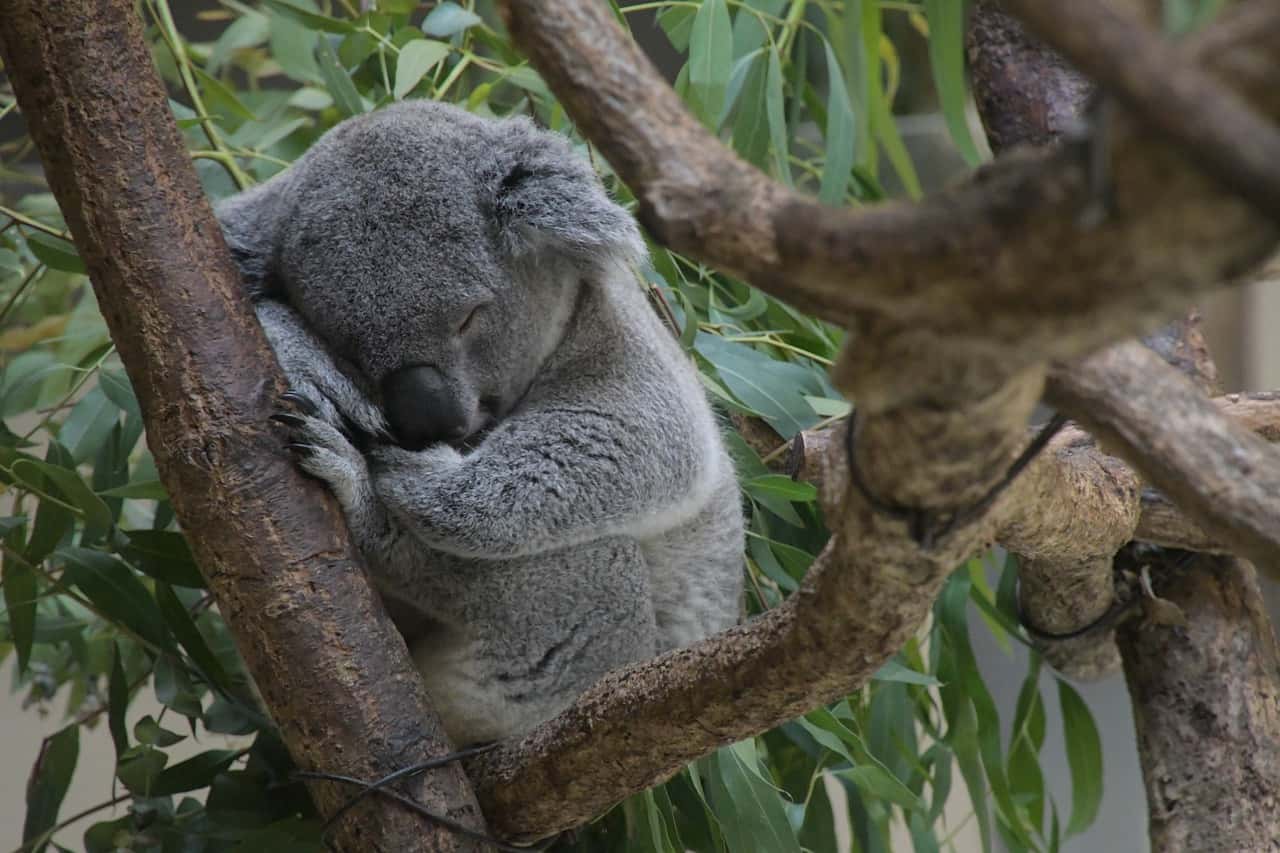
To a koala, the bigger the beast, the deeper its call. Most land-dwelling creatures produce their noises by expelling air through the voice box that causes vibrations in a couple of membranous flaps. However, koalas do things differently. Their croaking call was typical of an animal with a vocal tract that is almost the entire length of an adult koala. The low-pitched mating calls produced by the velar vocal folds can help others identify the caller and figure out his body size. Another extended thought theory is that female koalas utilize the bellow pitch as an honest signal of male quality.
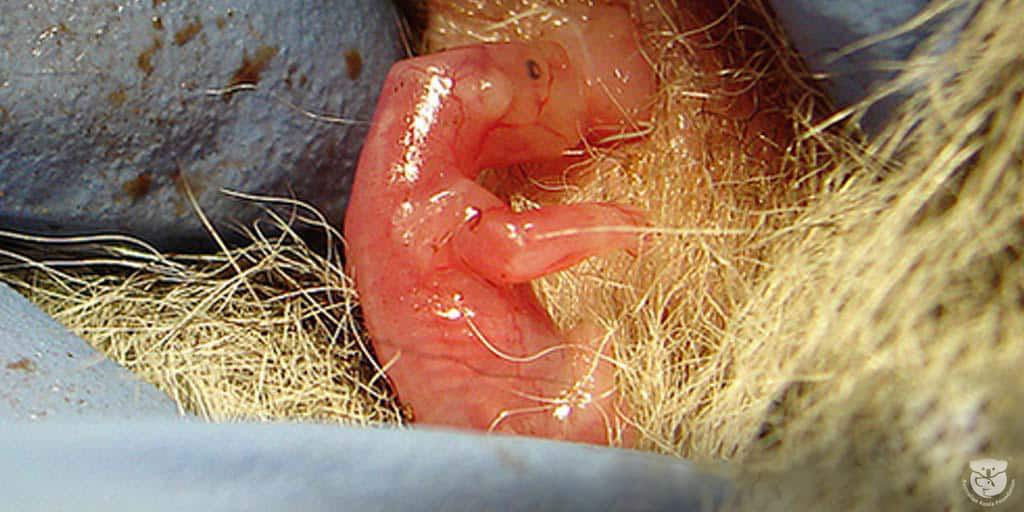
21. Baby Koalas Look Like Salamanders
Maybe you like salamanders, and that’s perfectly fine. However, you probably weren’t expecting those baby koalas, when firstborn, to look like lizard-like creatures. They are born long before they can survive independently, which is why they have to spend months inside their mothers’ pouch. When first born, baby koalas, known as joeys, are only about two centimeters long and are completely bald. They are also entirely blind deaf, as none of their organs have yet fully developed. However, it does have claws, as well as strong forelimbs, which allow it to get around its mother’s pouch.

You might be shocked to learn that the tiny joey makes its way from the birth canal to the pouch without any help from its mother. The joey climbs up through the fur on the mother’s abdomen to the pouch opening. Once inside the mother’s pouch, it attaches itself to one of the two milk teats, which swells to fill its mouth. For the first few months of life, the joey stays inside the pouch and drinks only the mother’s pouch. Over these few months, they grow, develop eyes, ears, and fur. By about seven months of age, the joey can leave the pouch for longer and longer periods.
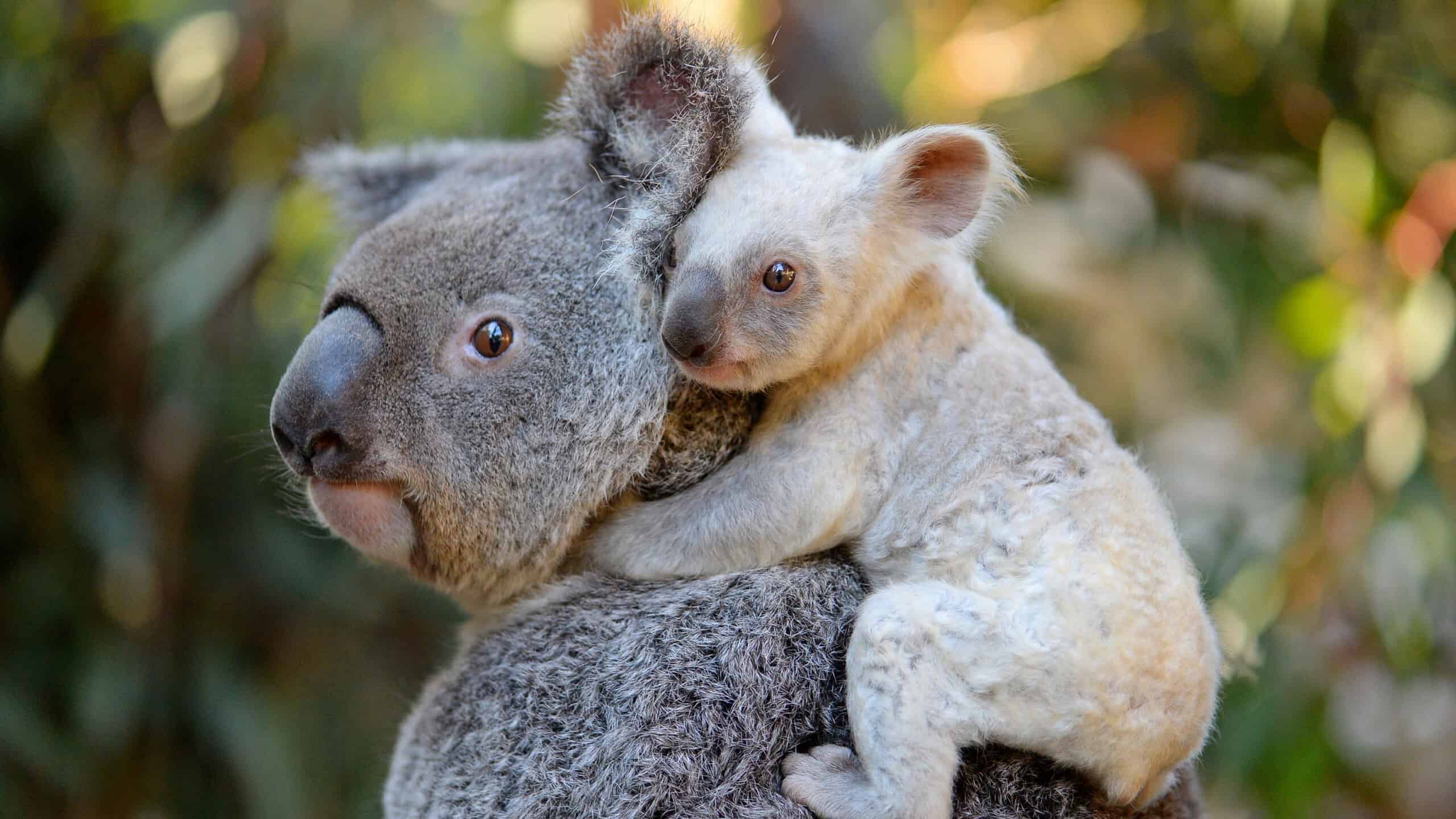
20. Mother Koalas Feed Poo To Their Young
That might seem incredibly gross, but “pap” is the proper name given to a particular type of poo that mother koalas feed to joeys in a month or so before they become mature enough to eat eucalyptus leaves. Pap is smooth and runny, and it provides the microorganisms that need to populate the joey’s intestinal tract before it can digest the leaves. Koala joeys are not born with this specific bacterium, so for it to eat and digest the tough and fibrous eucalyptus leaves, it has to be passed on from the mom to the baby.
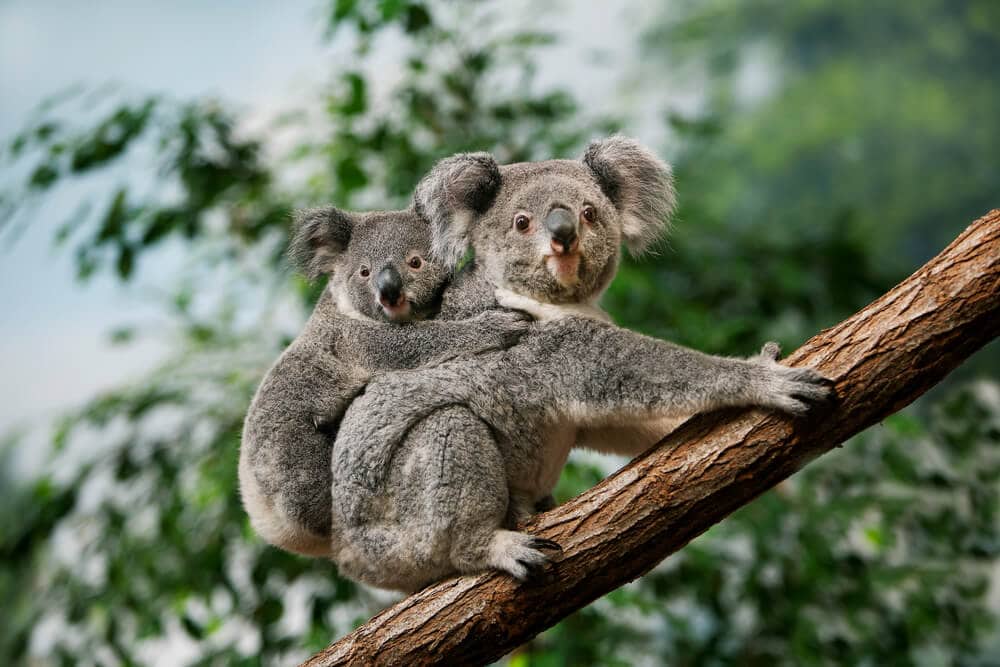
After spending about six months drinking milk, the joey will start spending short periods out of the pouch and nuzzling its nose around. This movement is what stimulates the production of pap. Before leaving the mother’s pouch and devouring an adult diet, they stay in the pap for a few weeks, perhaps a month. They must establish enough bacteria. Imagine your mother feeding you poop. Whether it was full of probiotics or not, the authorities would probably take you away from her permanently. However, koalas don’t call feeding poop to their kids child abuse. They call it love.
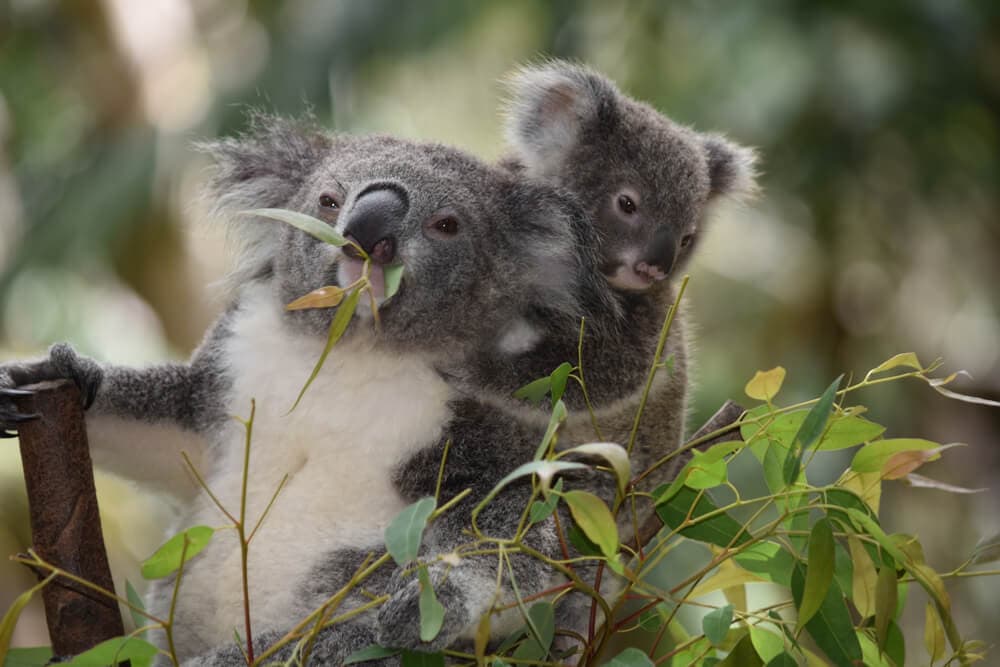
19. Mother Koalas Kick Their Young Out Of their Home Range
After about six months of age, joeys leave the mother’s pouch and ride around on her back, though they return to the bag to drink the mother’s milk. They continue doing so until they are too large to fit inside it. Joeys remain with their mothers for one to three years, usually depending on when they have another joey. Once they leave their mothers, they have to find their own home range. Often, they search for a field that belonged to a koala that is now deceased and left behind an area of eucalyptus trees on which it can forage. They aren’t allowed to stay in the mother’s range.
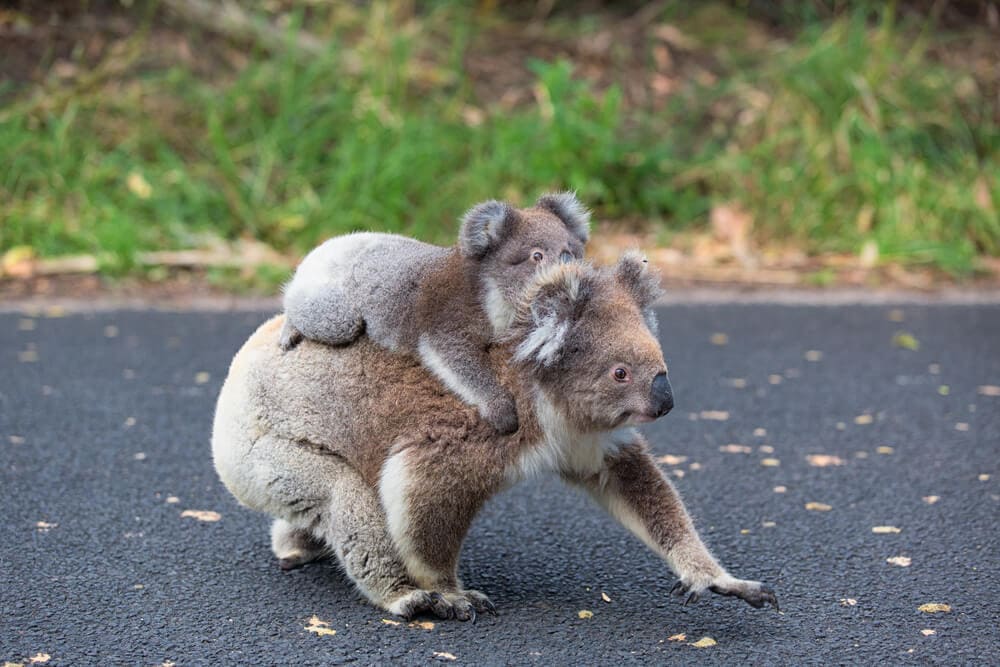
Some koala joeys leave their mothers at the ripe age of 12 months. They do so to try to find their own home ranges. That’s when life begins to get harder for these young koalas because they now have to find their own territory. This new territory has to be somewhere with the right tree species with tasty gum leaves to eat and somewhere near other koalas. There are also many other factors to consider when choosing a new home range. The koala joeys have to consider a location safe from threats such as habitat destruction, cars, and dogs.

18. Koalas Eat Their Weight In Food Every Two Weeks
Koalas weigh about 14 kilograms each, and every day, they eat ½ to 1 full kilogram of food. That means that every fortnight, they eat their entire weight in food. However, they don’t have chubby little stomachs to show for their voracious eating. They eat almost nothing but eucalyptus leaves, which are low in nutrients and difficult to digest. They eat nothing but salad, which may make them bloated and constipated, but they won’t gain weight from it. Koalas have to consume large amounts of the leaves because they are so devoid of nutrients that their needs can only be met by engorging themselves.
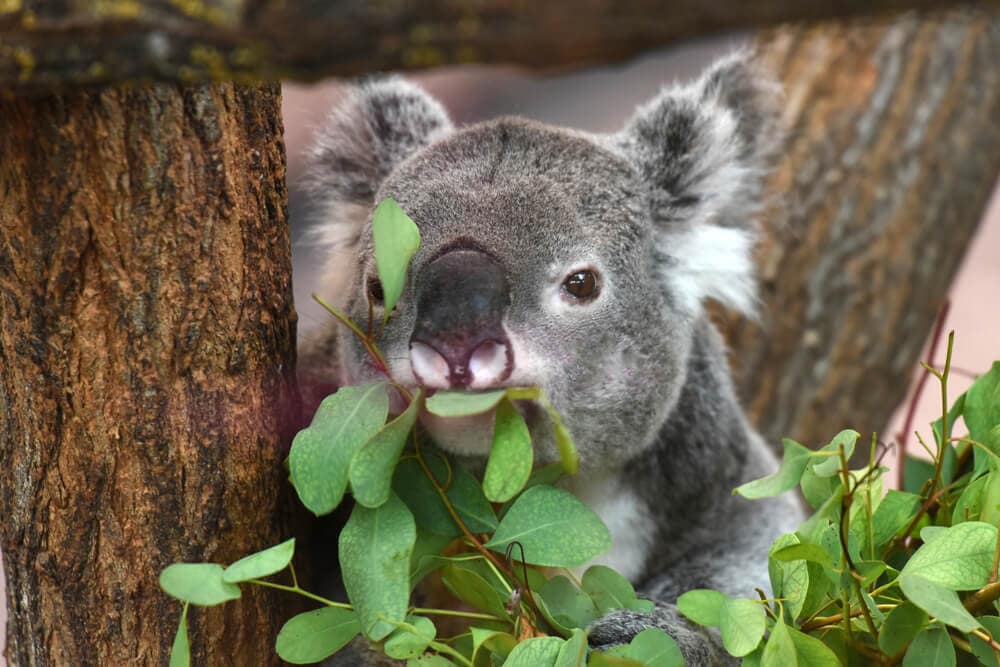
As nocturnal animals, koalas can consume all of their daily foods in about three to four hours. The eucalyptus leaves are the primary source of a koala’s diet, and its digestive system has uniquely adapted to break down these harsh leaves. Koalas are incredibly picky eaters. However, on rare occasions, they will branch out of their comfort zone and eat from other Australian natives. These eucalyptus-eating Australian icons don’t absorb many nutrients in their diets or spend too much time consuming so they can maintain a healthy and manageable weight. Even though we might find eating the same food everyday bland, the koalas find it satisfying.
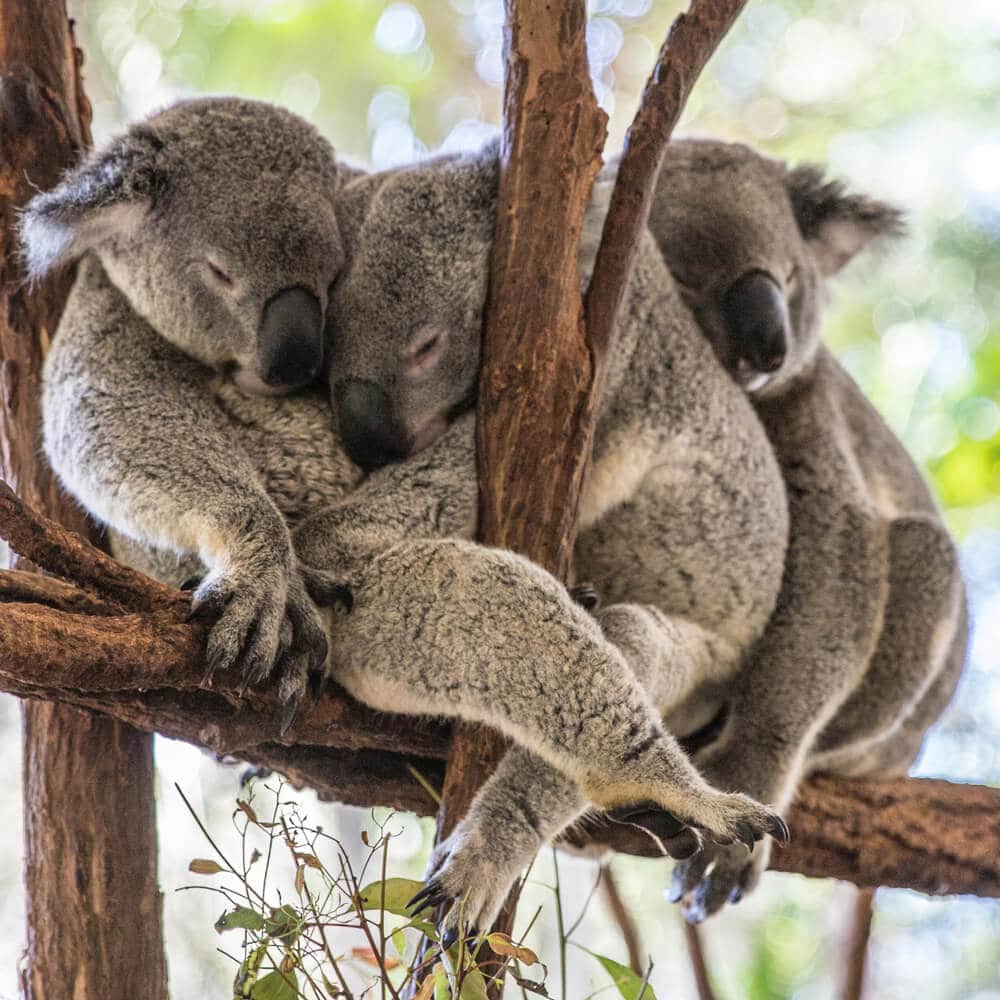
17. Koalas Do Nothing But Eat And Sleep
They sleep 18 hours a day and eat the equivalent of their own body weight every two weeks. Imagine if you were that lazy and entitled! But koalas can get away with it because they are (seemingly) so cute and cuddly. Koalas are the laziest of creatures. However, unlike cats, which are also quite lazy, they would make terrible pets. You would hardly be able to feed them enough, and their sharp claws would wreak worse havoc on your furniture than a feline. Not to mention the horrible smell from their stink glands if they felt that you were encroaching on their territory.
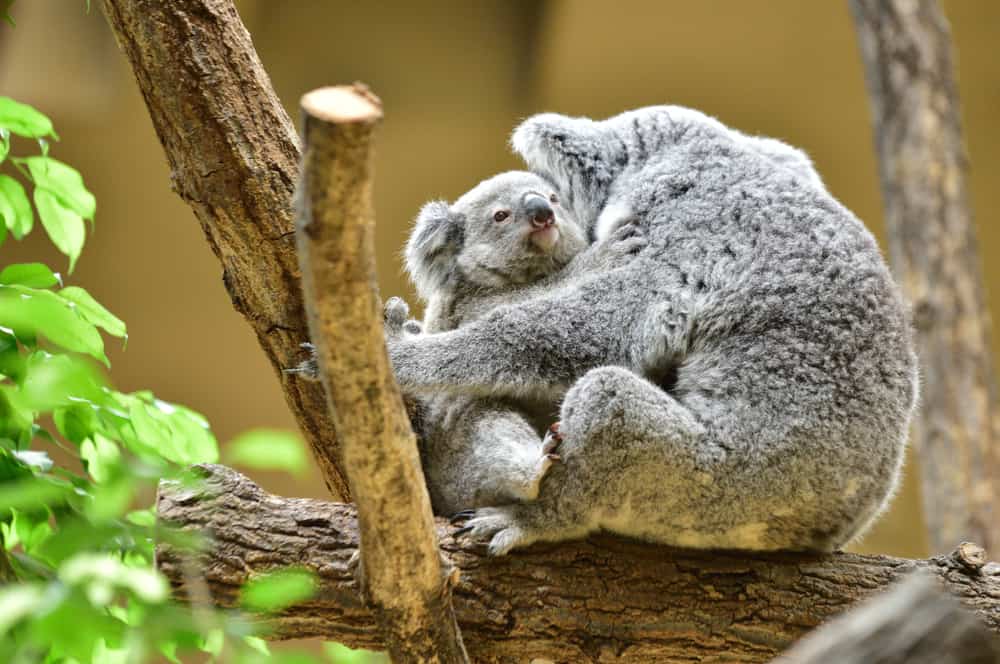
Koalas are mostly nocturnal animals and are primarily active at night. They might be slightly busy at dawn or dusk. That might be because, in the cooler hours, the koala is less likely to lose the precious moisture and energy than they would if they were active during the hotter daylight hours. Koalas have a thick wooly fur that protects them from both high and low temperatures so they can comfortably survive. The coat on the koala’s bottom is densely packed. It essentially provides them with a cushion for the stiff branches that they sit and sleep on. If you spent between 18 and 20 hours a day, you would want to be comfortable too.
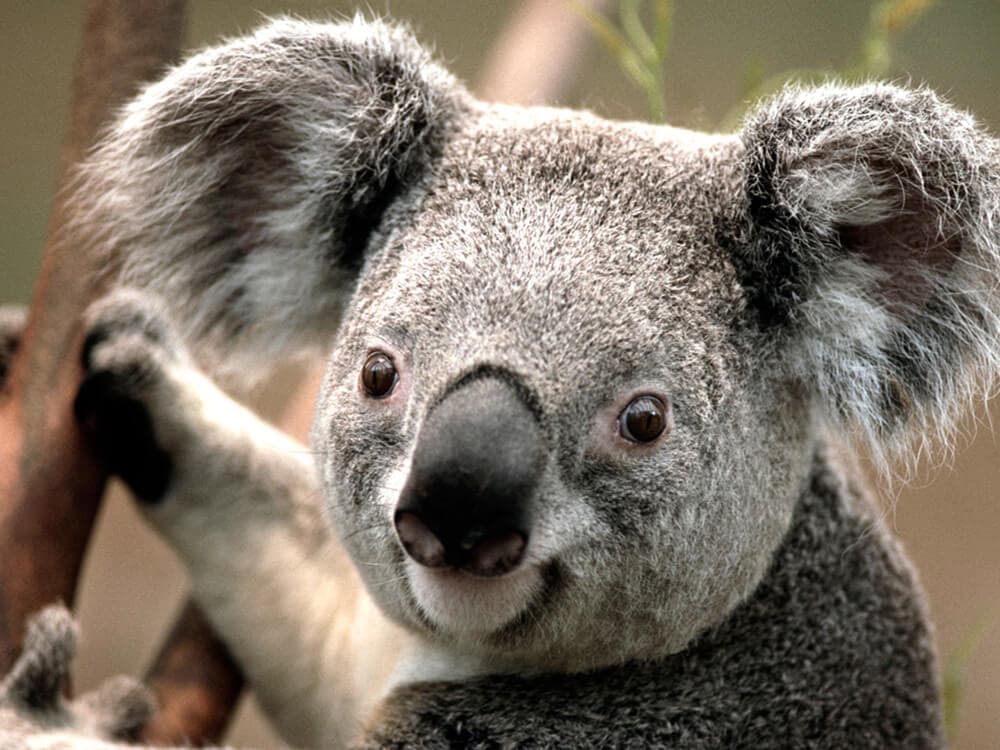
16. Koalas Are Fiercer Than Crocodiles
At first glance, a koala appears cute and cuddly. A few years back, a group of thieves broke into a zoo with the plan to steal a koala to sell for money to buy drugs. The koala went berserk and covered them with so many scratches and lacerations that they had to abort the mission. However, the thieves didn’t give up. Instead, they captured a four-foot crocodile and, despite the reptile’s thrashing, hauled it over the security fence. The moral of the story is that kidnapping a crocodile is easier than kidnapping a koala. Those evil little monsters will scratch and bite the daylights out of you.
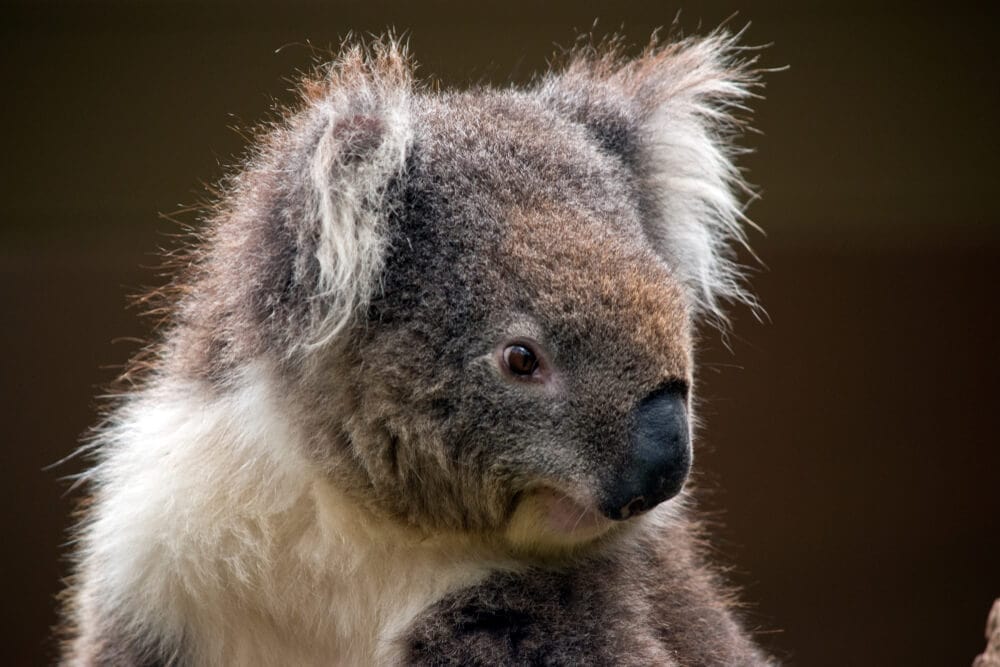
Most of the time, these tree-hugging animals keep to themselves. However, sometimes as described above, they snap. At the end of the day, koalas are wild animals. Like most wild animals, they prefer to have no contact with humans at all. One study showed that even captive koalas experienced stress when humans approached too close to them. As you get closer to a koala, their behavior will change. They will likely stop resting or feeding and stare at you nervously. Koalas are not the cute, cuddly, and inviting animal, they are often portrayed as. If you ever find yourself close to one, you should proceed with extreme caution.
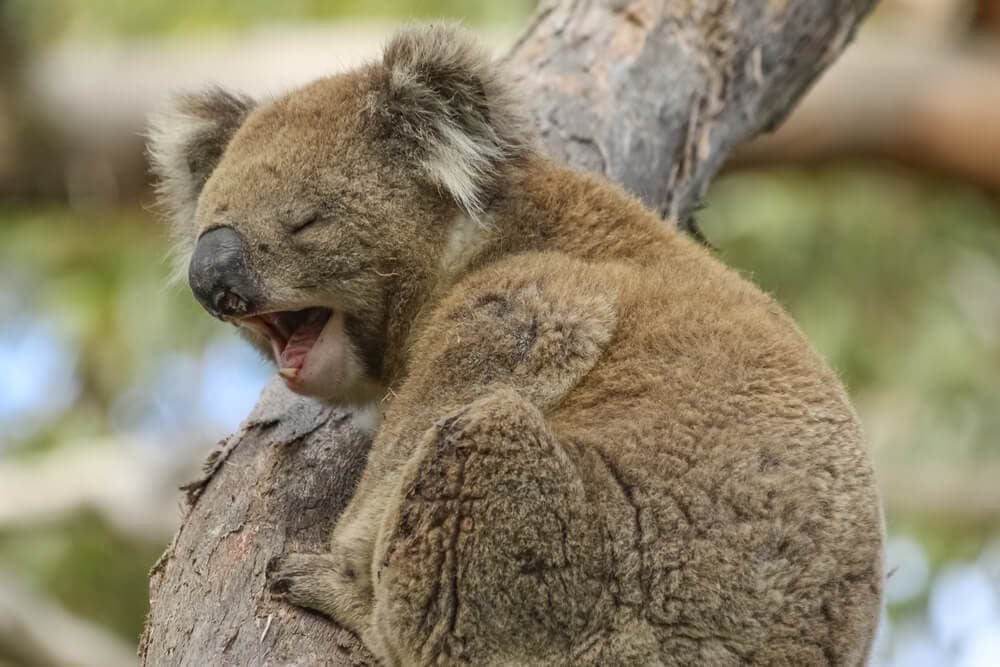
15. Koalas Will Eat Your Tires
A few years ago, a dairy farmer named Ebony Churchill in Victoria, Australia, caught a video of a koala that chased her all-terrain vehicle for several minutes before she finally pulled over to find what the little bugger was up to. She was afraid of the koala attacking her, but he wasn’t giving up interest. Rather than being interested in Ebony or anything that she was hauling, the koala was more intrigued with her vehicle. A little confused, the dairy farmer watched the koala as it made its way around the car, inspecting every inch of it up and down.
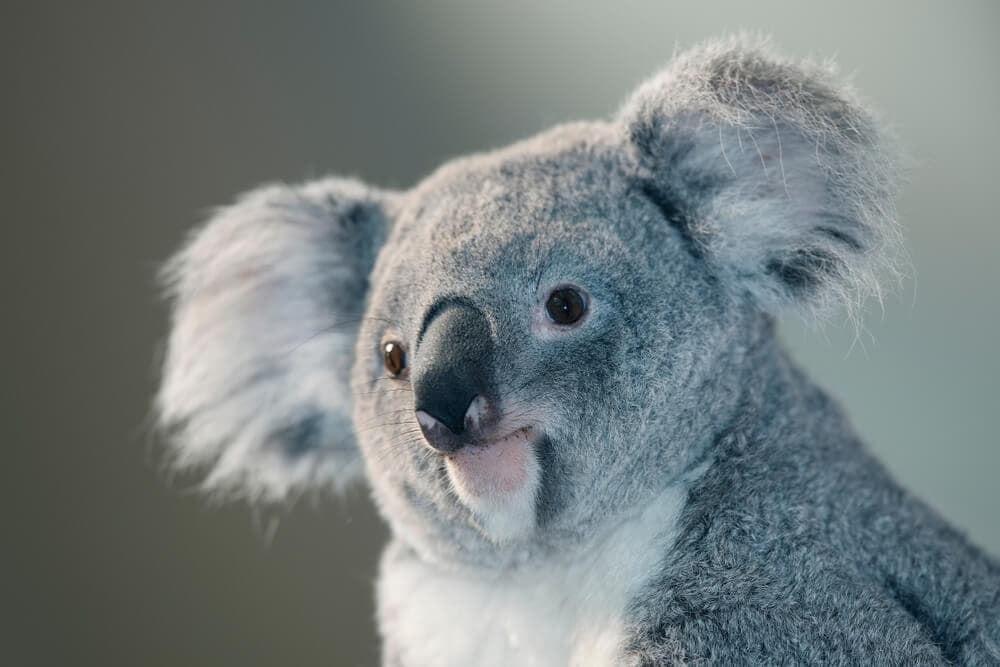
Ebony was stunned to find out what the koala wanted. As it turns out, the real object of the koala’s affection was the ATV’s tires. Finding precisely what it wanted, the koala used its sharp claws to latch onto the rear tire and refused to let go for several minutes. Although tires and rubber would not be an obvious thing to eat, the koala found it incredibly appealing. Remarkably, Ebony commented on how cute the koala was and that the animals are particularly active this year. That is only one example of how a koala can leave you feeling shocked.
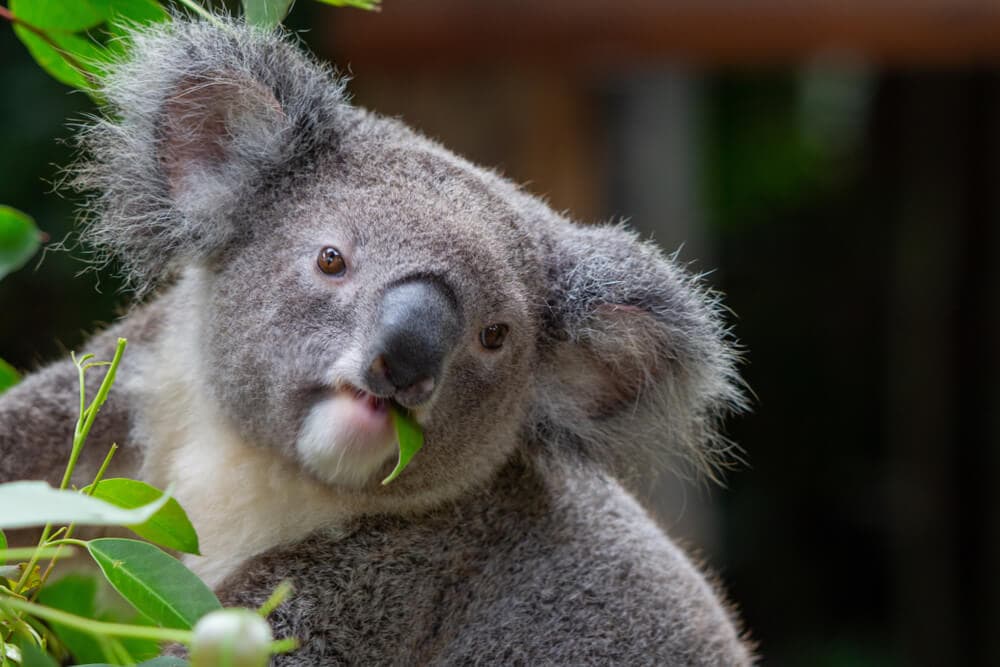
14. Koalas Are Unintelligent — To Put It Nicely
Not only because they might be attracted to the tires of an ATV but because they don’t realize that eucalyptus leaves are still edible when they are no longer on the tree. In terms of brain-to-body ratio, koalas have some of the smallest brains of any animal on the planet. Another way to measure intelligence is to measure the folds in the brain. For example, Einstein had extra folds in his mind that most people don’t have; more folds generally correspond to higher intelligence. However, koalas’ brains are as smooth as walnuts. They can’t help it. They’re just stupid.
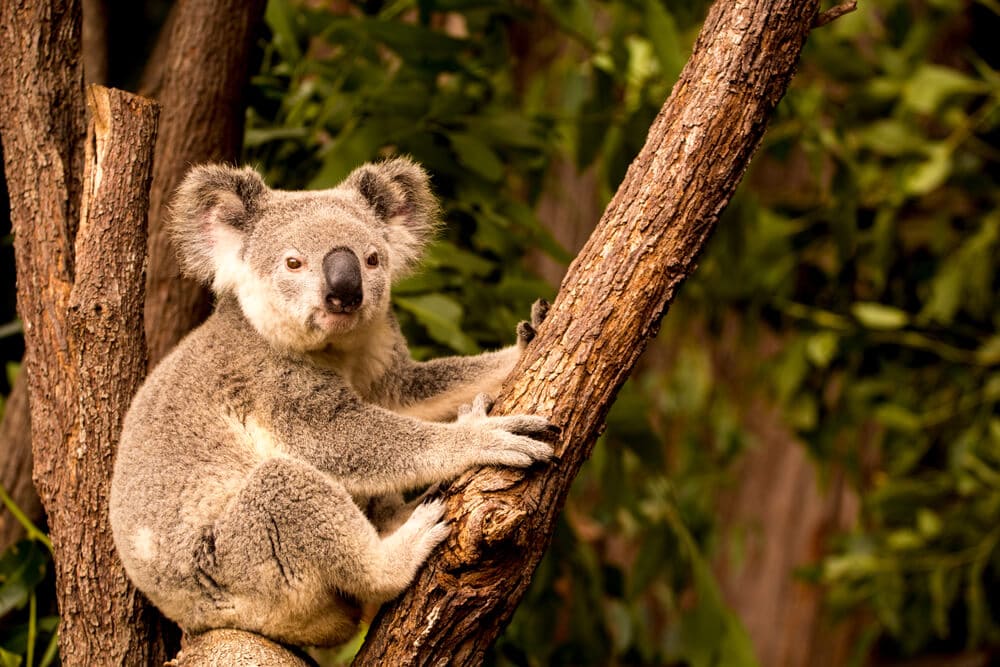
According to the experts, koalas lack intellectual abilities. Despite looking extremely cute and cuddly, they are considered neither smart nor intelligent. A lot of basic examples confirm the lack of intelligence within koalas. For instance, they are usually not aware of their surroundings. They hardly pay attention to any unusual event that is happening within their surrounding areas. Their only preference is to sleep as much as possible. If it rains, koalas will not be bothered to move to some shade of branches to avoid it. Instead, they will continue to lay down in the rain. Even when there are brush fires, koalas will not leave their trees unless they get incredibly close.

13. Koalas Are Pickier Than Toddlers
There are hundreds of varieties of eucalyptus trees in Australia, but koalas will only eat the leaves of about 30. Moreover, the 30 that they are willing to eat are some of the most nutrient-poor varieties they could indulge in. However, they have to be somewhat aware of how poor their diets are, as they are known to fill in the gaps by eating dirt. After all, the soil has the calcium that the eucalyptus leaves lack. So you see, they are toddlers that are raging through the Terrible Twos and would rather eat dirt than a home-cooked meal.
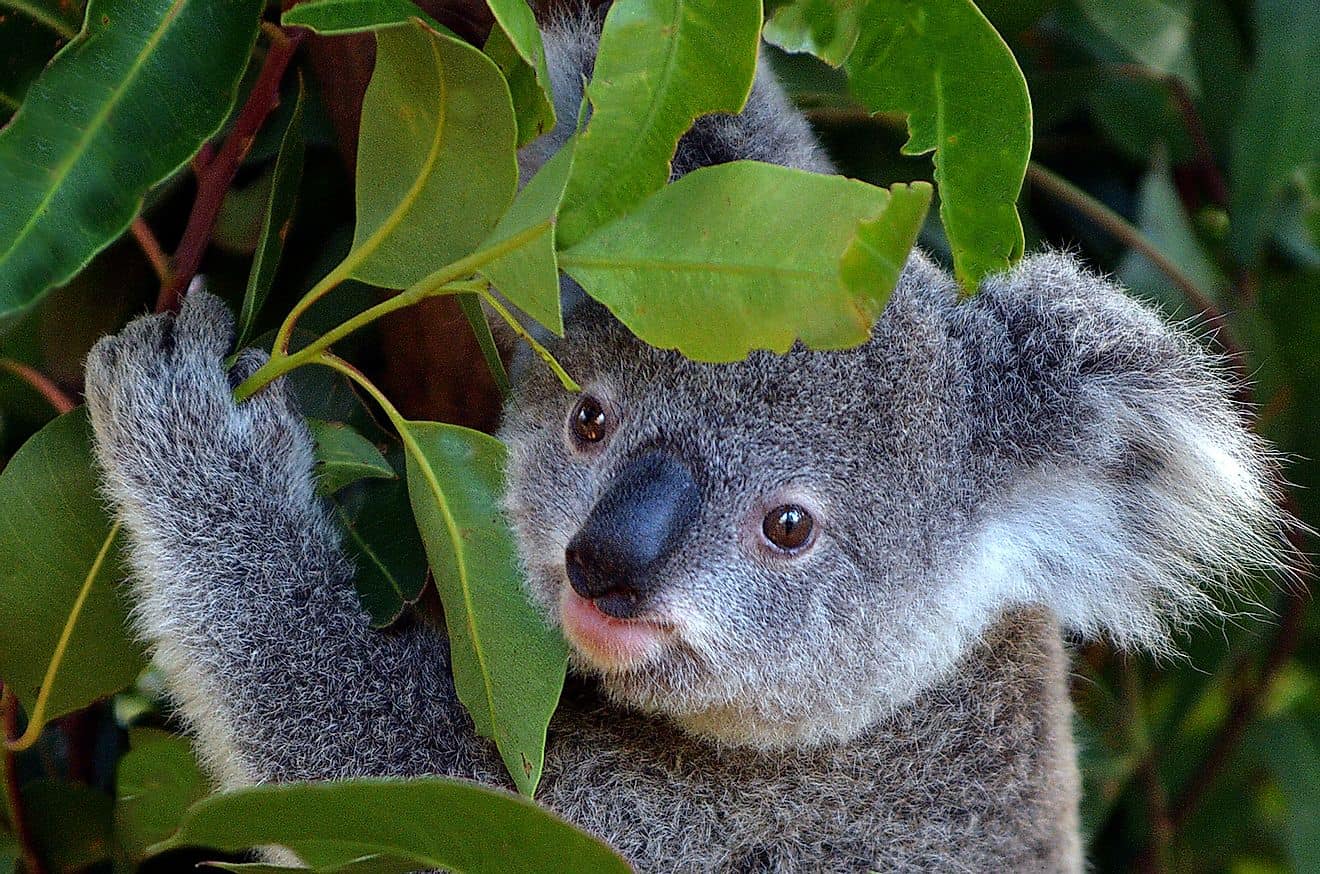
When a koala is seeking the perfect eucalyptus tree, they evaluate the tree’s size, the neighborhood it is found in, and the taste of the leaves that matter the most. They are very fussy eaters and have extreme preferences for different types of gum leaves. Within a particular area, as few as one, and generally no more than two or three eucalypt species will be regularly browsed. These are more commonly referred to as primary browse trees. The variety of other species, including some non-eucalypts, are only scanned occasionally or used for just sitting or sleeping. Since different eucalyptus species grow in different parts, koalas in different areas may have slightly different diets.
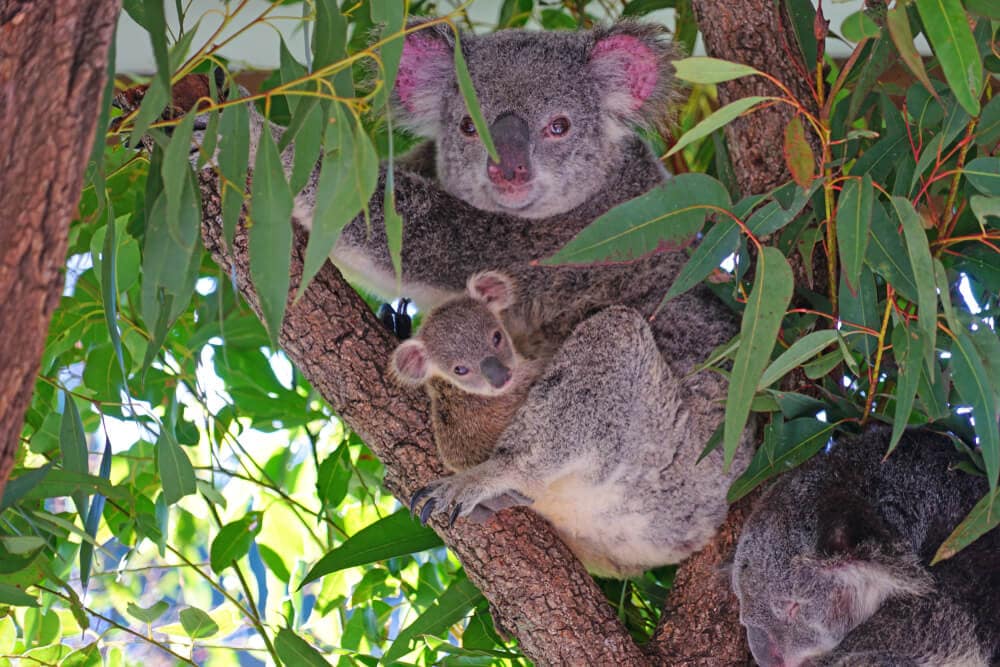
12. Eucalyptus Leaves Are Toxic To Koalas
Koalas eat as much as a full kilogram of eucalyptus leaves per day; in fact, they don’t eat much of anything else. But eucalyptus leaves are poisonous to them! They have a unique organ inside their digestive systems to extract the poison so that it doesn’t kill them. They have very long digestive systems to accommodate their relatively poor diet. However, if they eat too many eucalyptus leaves, even their well-adapted bowels won’t save them; they really can eat themselves to death. It’s not unlike a person going to McDonald’s every day and convincing themselves that the cheeseburgers and milkshakes are healthy.
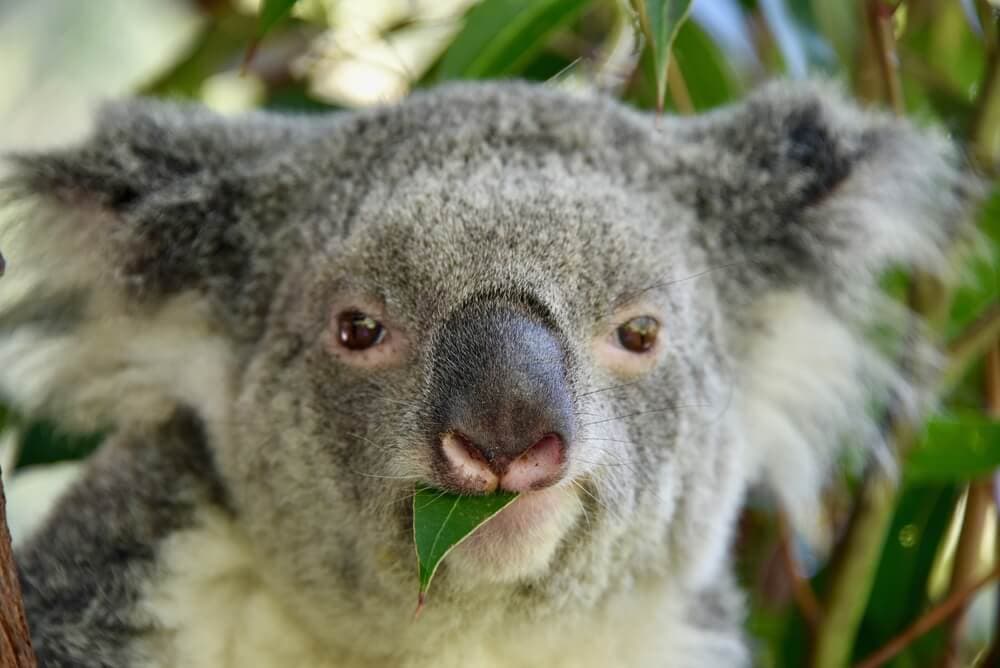
To safely process the leaves’ toxic chemicals, koalas are equipped with the unique microbes in their digestive tracts. Not only are these bugs able to break down the poisonous compounds, but the microorganisms can be passed from mother to baby koala. These specific microbes allow koalas the ability to flush the toxins out extremely quickly from their systems. That is the only way to eat their way through pounds of leaves every day without getting incredibly sick. Unlike koalas, if a normal herbivore set out on the all-eucalyptus leaves diet, it will get gravely ill and eventually die.
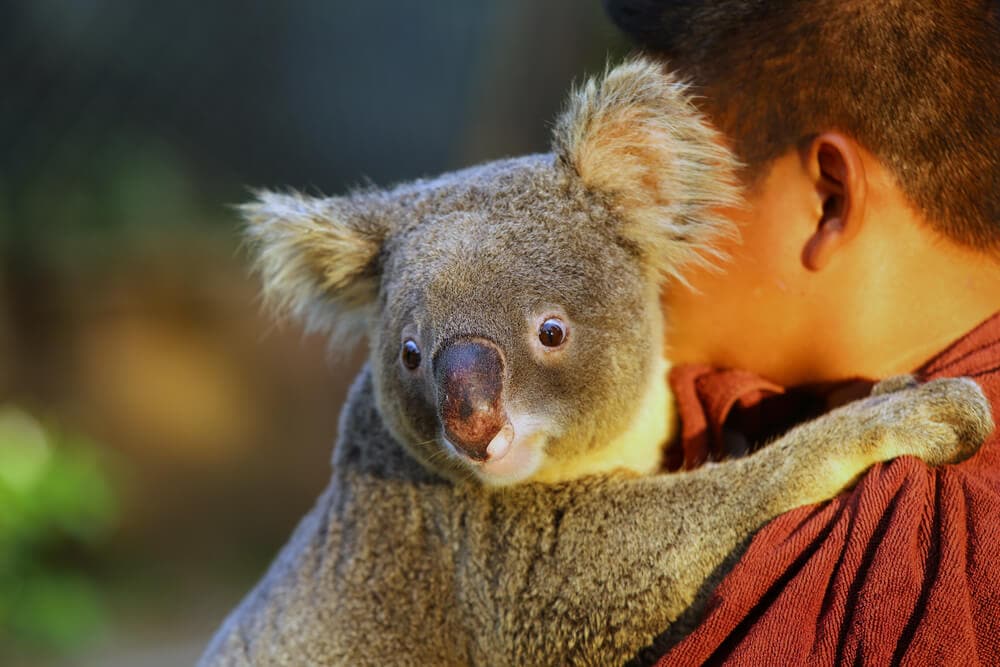
11. Koalas Aren’t Cuddly — They’re Manipulative
When people are asked to picture a koala, one of the first images that comes to mind is one of them hugging onto a tree trunk. However, clinging to the side of the tree isn’t just a passing hobby for the furry little creature. You may think that koalas enjoy hugging the trunks of acacia trees, but they’re holding onto them to cool themselves off. The acacia trees serve as a kind of temperature-control device for hot summer days; as the weather heats up, the koalas go further down the trunks to even colder regions. It is a handy way to get rid of heat on a sweltering day.
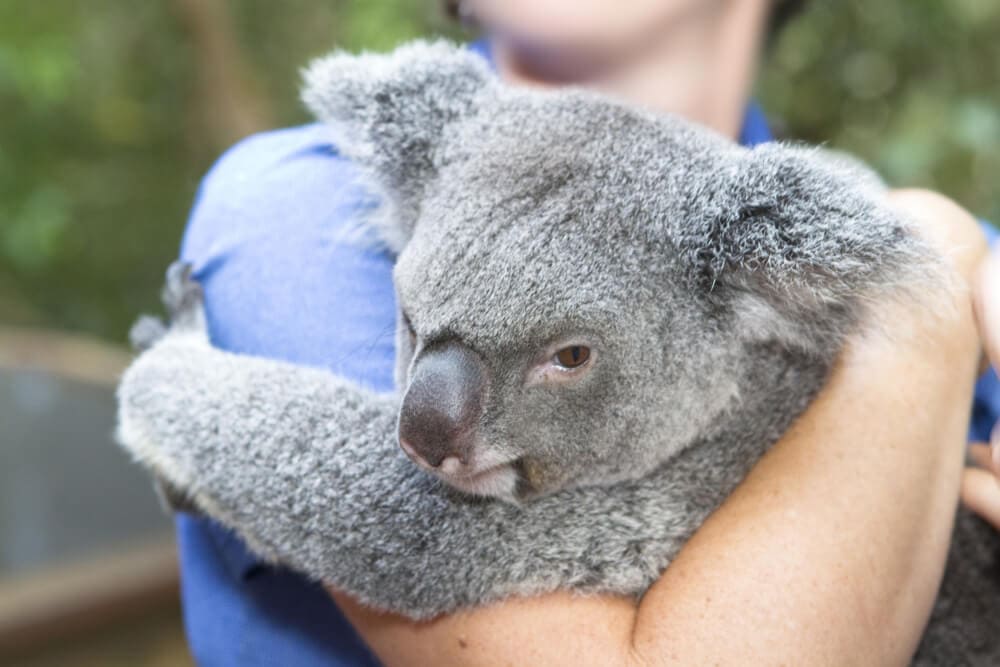
Given that koalas spend so much time in trees, nobody wondered why they hugged the tree trunks. Many people thought they were taking a break in a more stable spot after eating leaves in the branches. While the region is relatively cool most of the year, the temperature routinely spikes above 104 degrees Fahrenheit during the summer. So next time you see a picture of a koala hugging, someone, just know that they are manipulating that person to regulate their own body temperature. If the weather is chilly, they are probably trying to warm up, not have a cute little cuddle.
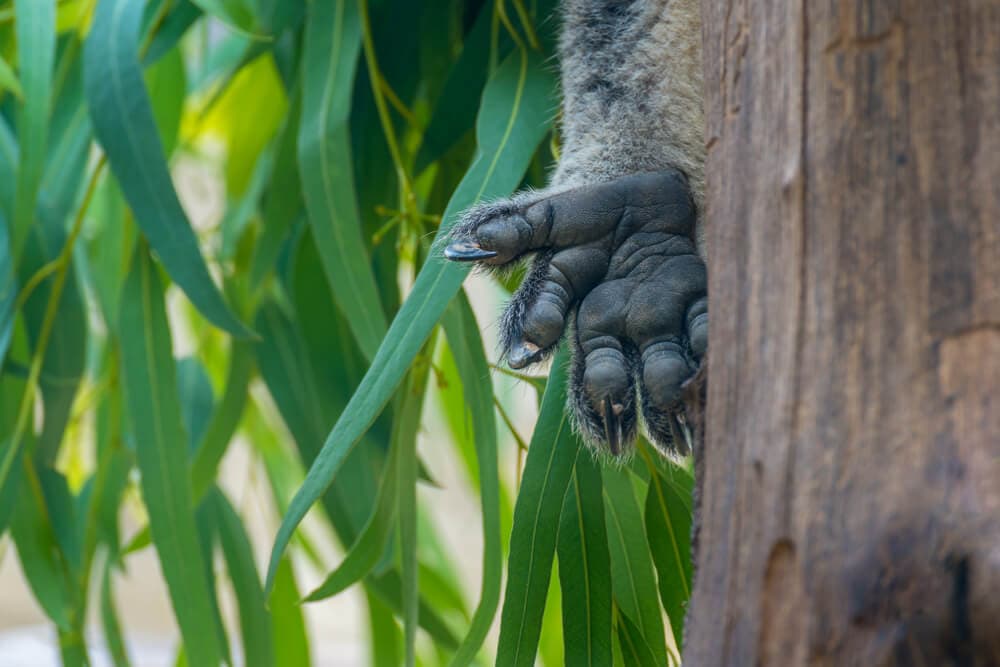
10. Koalas’ Hands Are Covered In Warts
The hands of koalas are remarkably similar to those of humans. If you compare a human fingerprint to a koala’s, you might not even be able to tell the difference because they are so indistinguishable. Not even a careful analysis under a microscope can easily distinguish the ridges on a koala’s fingers. Their palms also look much like ours, even lined with the same ridges. However, what sets koalas apart is that their hands are covered in warts. Both their hands and feet are riddled with them. Warts seem to be organized along certain lines as if they were meant to be there.
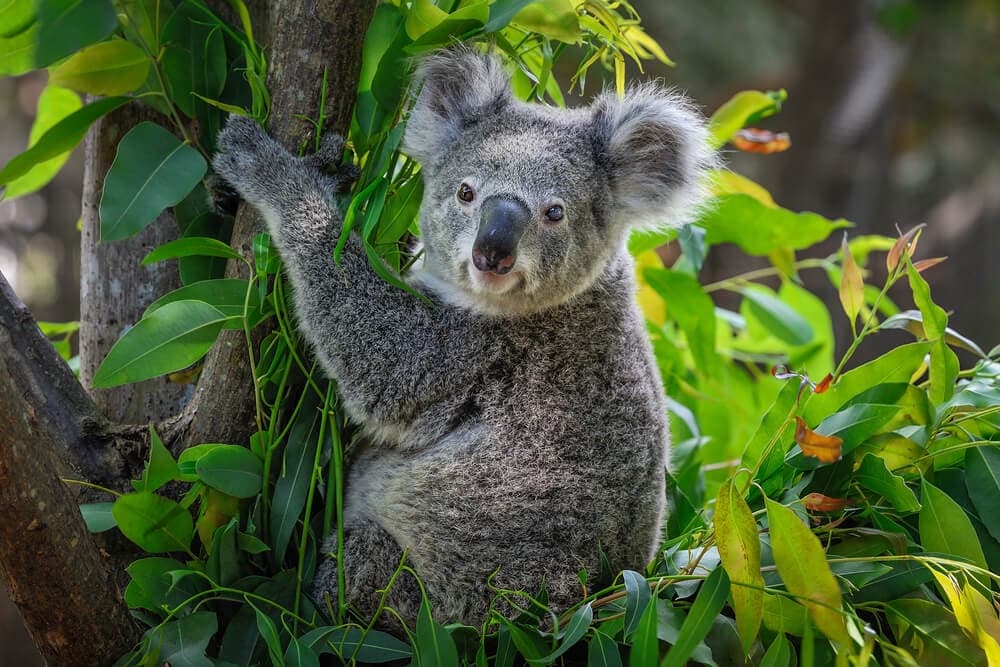
The remarkable aspect about koala prints is that they seem to have evolved independently. Koalas feed by climbing vertically onto the smaller branches of eucalyptus trees, reaching out, grasping handfuls of leaves, and bringing them to the mouth. Further, the origin of the fingerprints is best explained as the biomechanical adaptation to holding. That produces multidirectional mechanical influences on the skin. Their rough skin and warts help them travel within their home range and easily get their food. While humans and koalas have similar yet distinguished fingerprints, we can be thankful our hands are not covered in warts too!
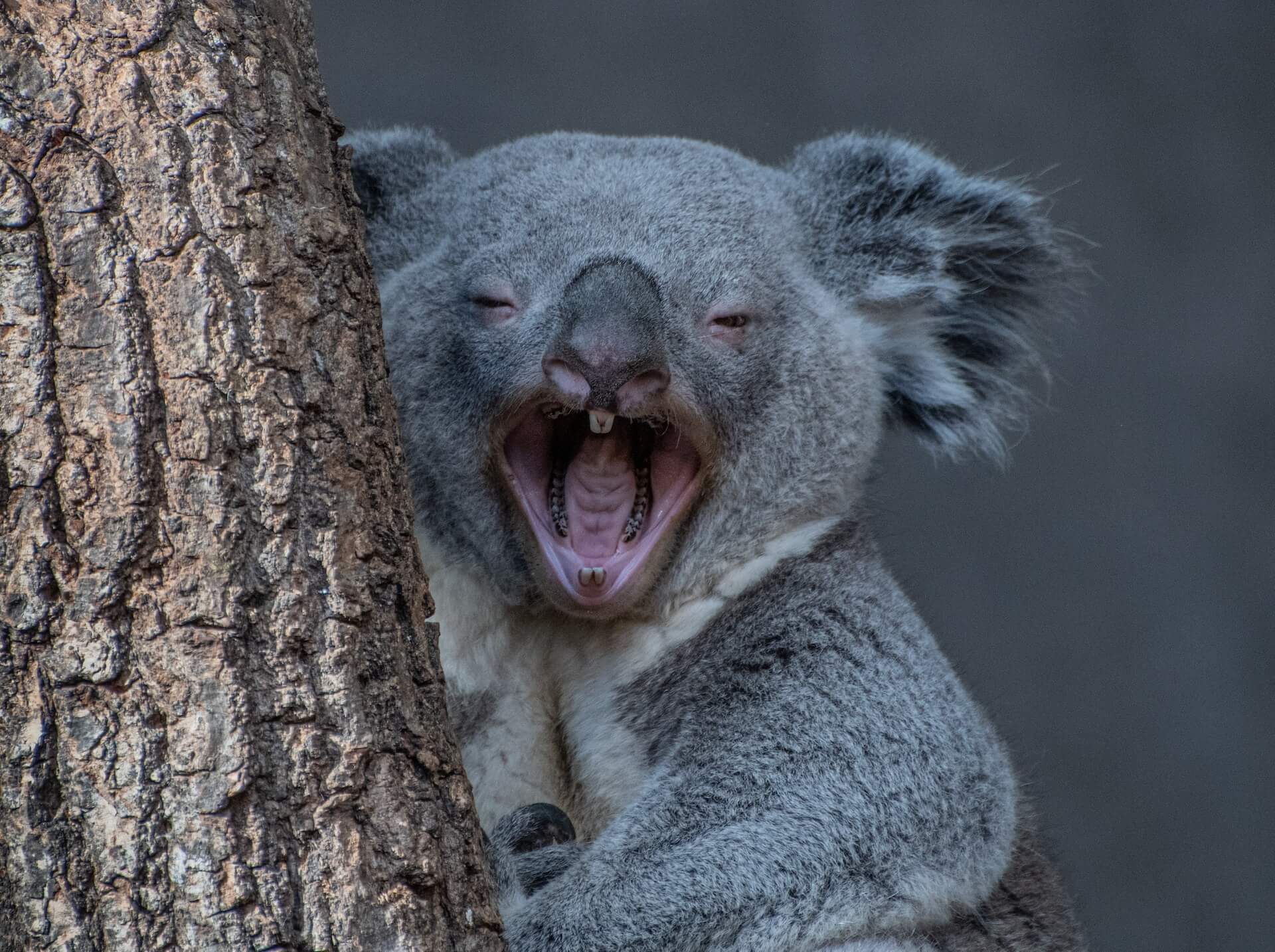
9. Koalas Have Sharp Teeth And Claws
Koalas may not be related to bears, but the size of their teeth and claws might convince you otherwise. In fact, given the choice between a bear and koala, after analyzing the size of the koala’s teeth and claws, you might decide to go for the bear. So what gives the impression that koala “bears” are cute and cuddly? Probably the fact that they look so much like teddy bears. However, teddy bears don’t carry chlamydia, have warts all over their hands, pee on people who are just trying to be helpful or eat poisonous leaves as their primary food source.
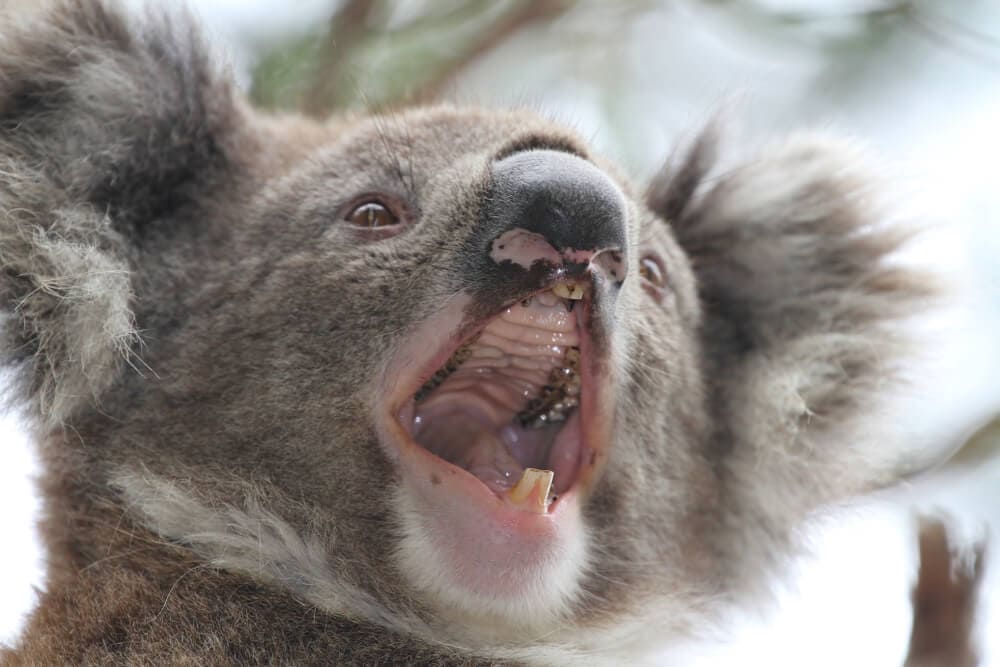
Koalas possess specialized claws for various purposes. Marsupials need specialized claws because they have to reach their mother’s pouch by climbing at the time of their birth. As they grow and mature, they spend their entire lives in trees and need more specialized claws to climb the trees. Their nails help them grab fresh eucalyptus leaves from the higher branches. The claws allow koalas to carve and engrave their territorial markings as well. They are sharp enough to leave dominant engravings on trees. Additionally, if another male challenges the dominant male for its territory and gets ready for a fight, these claws come in handy.
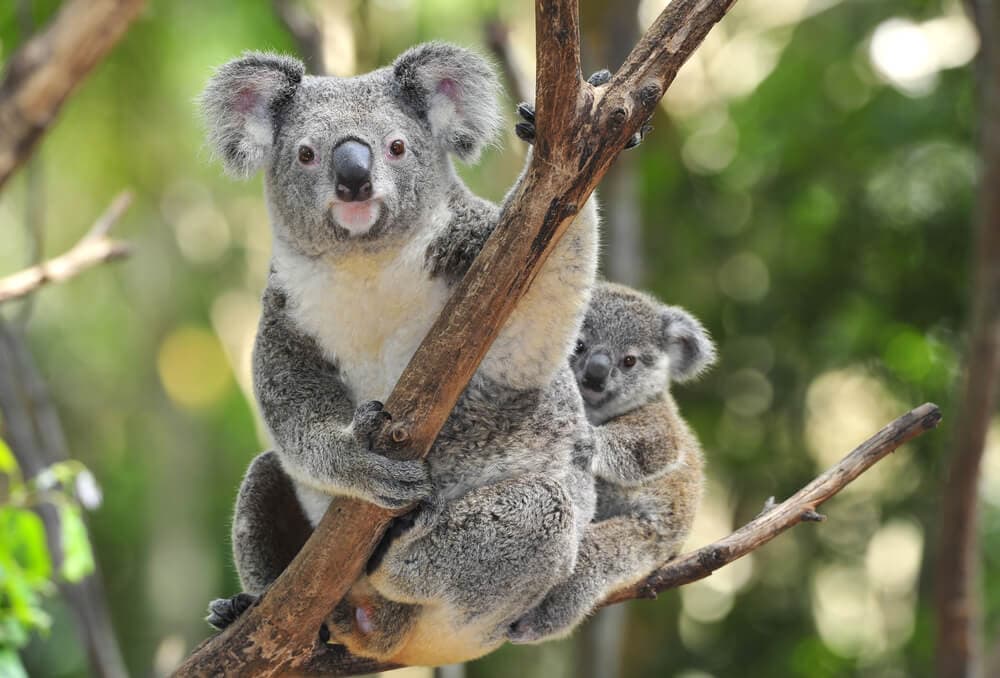
8. Cute Or Not, Koalas Are Endangered
There are probably fewer than 80,000 koalas today, and some experts suggest less than 43,000. There are several reasons they are on the endangered list. They have been falling prey to habitat loss, as the eucalyptus forests in which they live are particularly prone to damage from changes in temperature and weather patterns. They are also being destroyed to make way for human settlements and agriculture. Koalas are only native to some states within Australia, and those individual states, rather than the national government, are responsible for their preservation. There is little coordinated effort to protect these disgusting creatures.
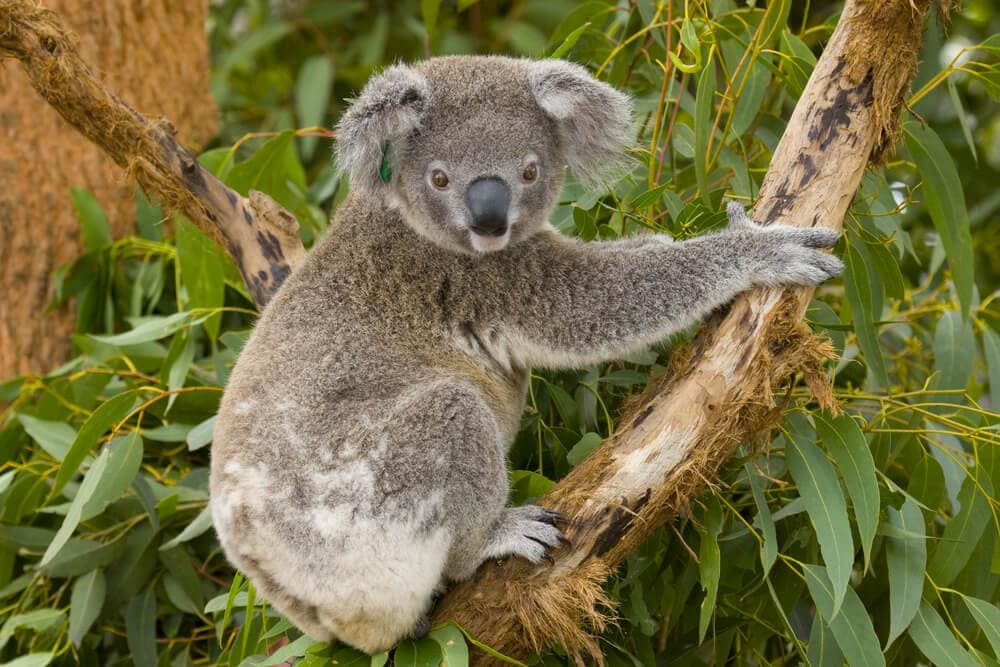
It has been said there is no legislation that effectively or consistently protects Koala habitat anywhere within Australia. However, this is not necessarily because the bill does not exist, but because there is not always the political will to adequately resource, implement, police, and enforce such legislation. There are four states where koalas occur in the wild. That includes Queensland, New South Wales, Victoria, and South Australia. To make matters more challenging, each state has its own legislation. Local government is where most day to day decisions are made about what happens to the koalas’ habitat. However, it is also where there is often the least amount of resources and expertise in wildlife management or habitat assessment.
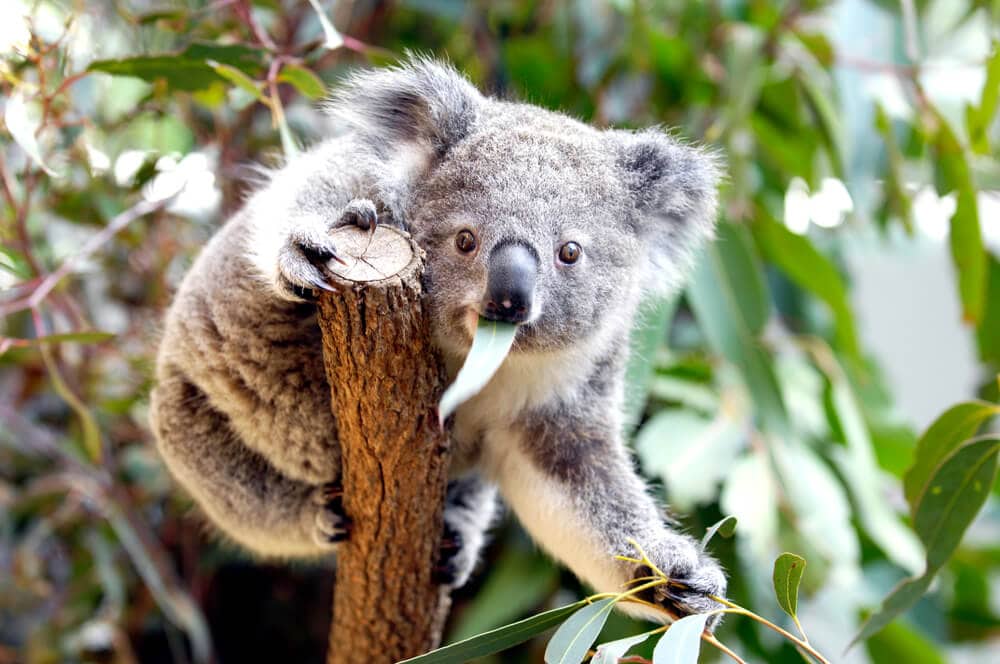
7. People Used To Kill Koalas For Their Fur
One of the quintessential features of koalas, apart from their two opposable thumbs on each hand and razor-sharp claws, is their creamy grey fur. Koalas in the southern part of Australia have thicker hair than their northern counterparts to help keep them warm during the colder winters. So it shouldn’t come as a surprise that people used to kill koalas in large numbers to obtain their fur. Today, hunting koalas is illegal, as they are an endangered species. Still, deforestation, both through fires and cutting down forests for human development, puts the creatures at high risk. It is also a challenge to police hunting koalas.
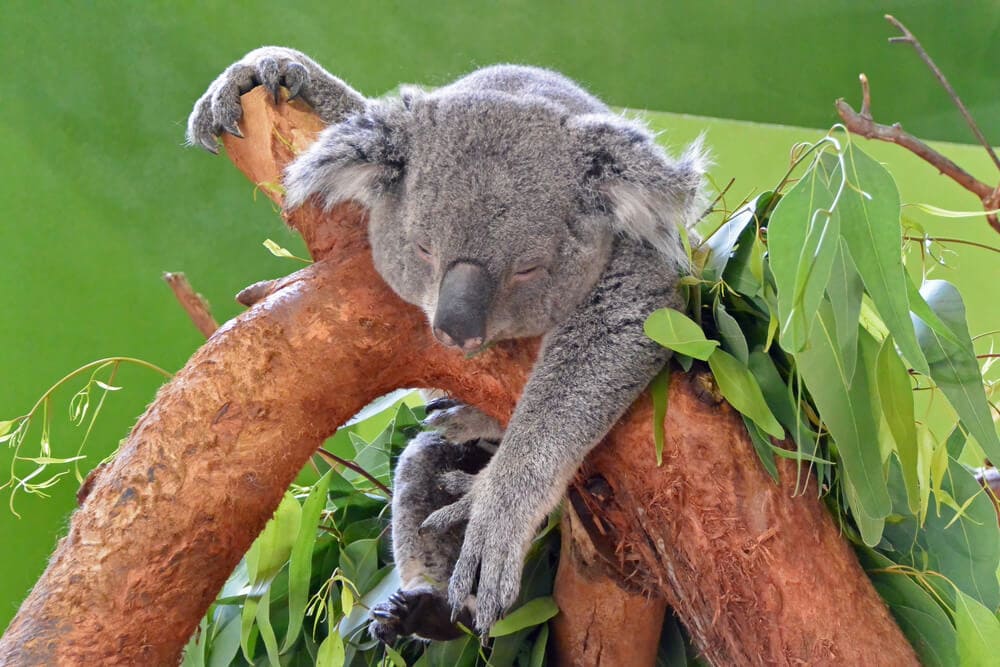
There have been over eight million koalas killed for the fur trade. Their pelts were shipped to London, the United States, and Canada. The koala was hunted as a matter of routine by the early settlers and explorers. The koala’s dense, waterproof pelt made it a valuable commodity on the international fur market, and demand increased accordingly. The koala had been hunted so indiscriminately that it had disappeared from many of its natural habitats. The poor animals were mainly poisoned and trapped as those methods did the least damage to the animal’s desired fur. During this time, the koalas narrowly escaped extinction.
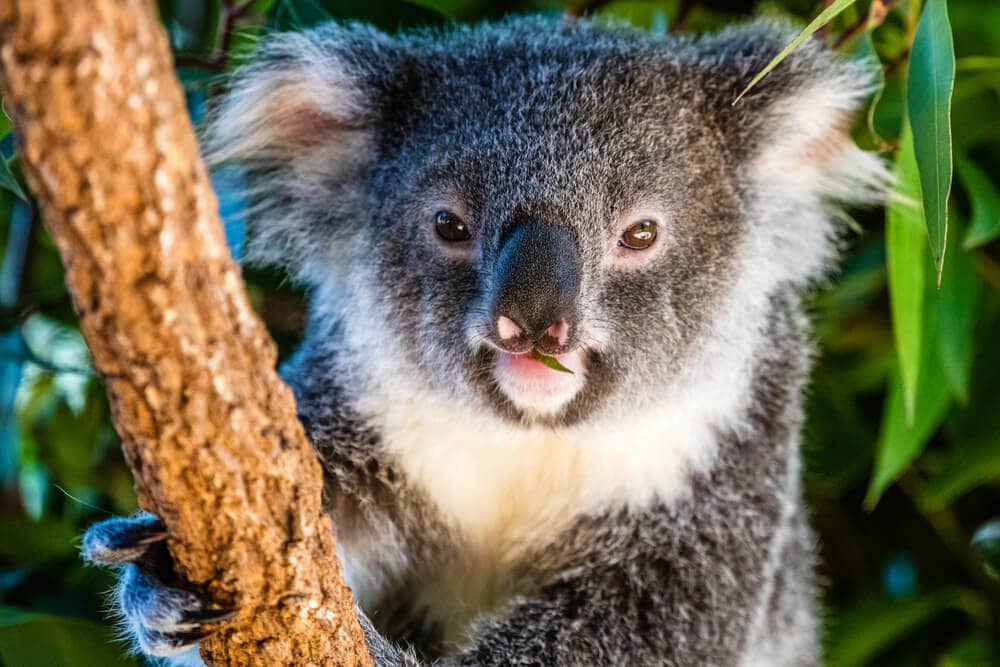
6. Chlamydia Is Also Threatening Koala Populations
As many as 50 to 90% of female koalas today have chlamydia, and the disease affects koalas more than many other species. Clinics in Australia are working year-round to help koalas suffering from it, but one of its side effects – infertility – could permanently inhibit koala populations. Veterinarians in Australia have their hands full tending to koalas who have chlamydia. Each vet can treat hundreds of koalas per year, but they can barely make a dent in the broad population infected with the disease. Their best hope is to inoculate koalas against chlamydia before they become infertile.
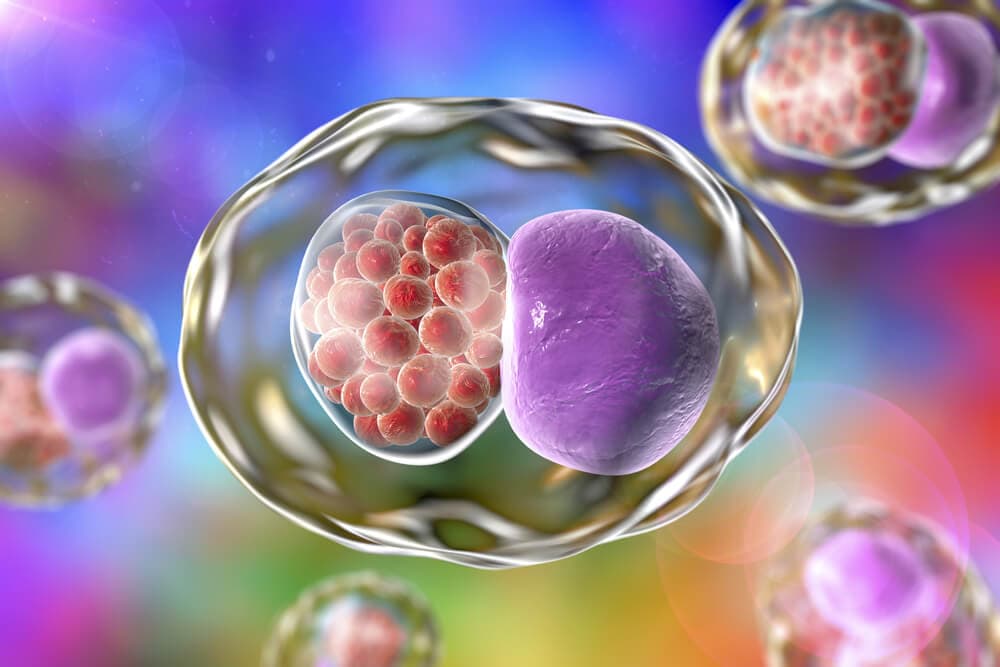
It has been known that some antibiotics produce severe side effects in koalas with chlamydia. The main side effect is that the antibiotics disrupt the gut microbes that enable the digestion of eucalyptus leaves, the dietary staple for koalas. However, recently researchers are looking into two new antibiotic treatments that may offer relief to the furry animal with minimal side effects. Although it is unclear exactly why koalas are so vulnerable to this disease, it is well-known how detrimental it can be to their health. Although there were some side effects with the new antibiotics, they were much less severe compared to what has been known.
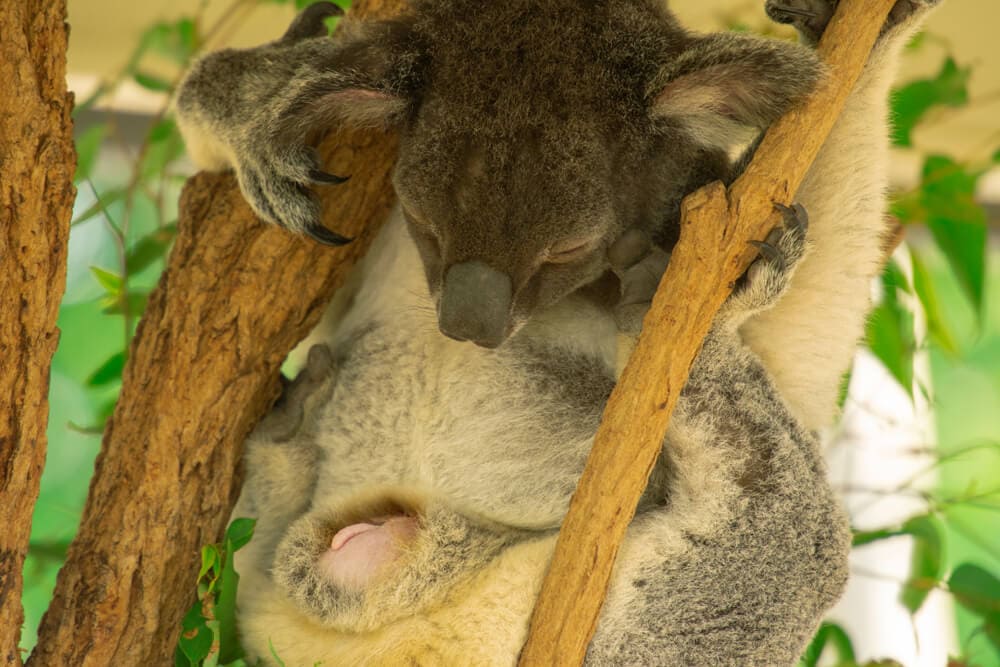
5. Koalas Have an Intriguing Gestation Period
The majority of animals have varying gestation periods. Some are very short, while others are relatively lengthy. Baby koalas are also known as joeys. You might be shocked to learn that joeys are delivered while they are still in the embryonic stage of development. At this time, they might only weigh half a gram. At birth, they look a little funny in comparison to what you might expect. You might imagine that they would be tiny, cute, smaller versions of their adult selves. However, they look incredibly opposite of that. In fact, if you saw a koala joey, you may not even be able to identify what it is.
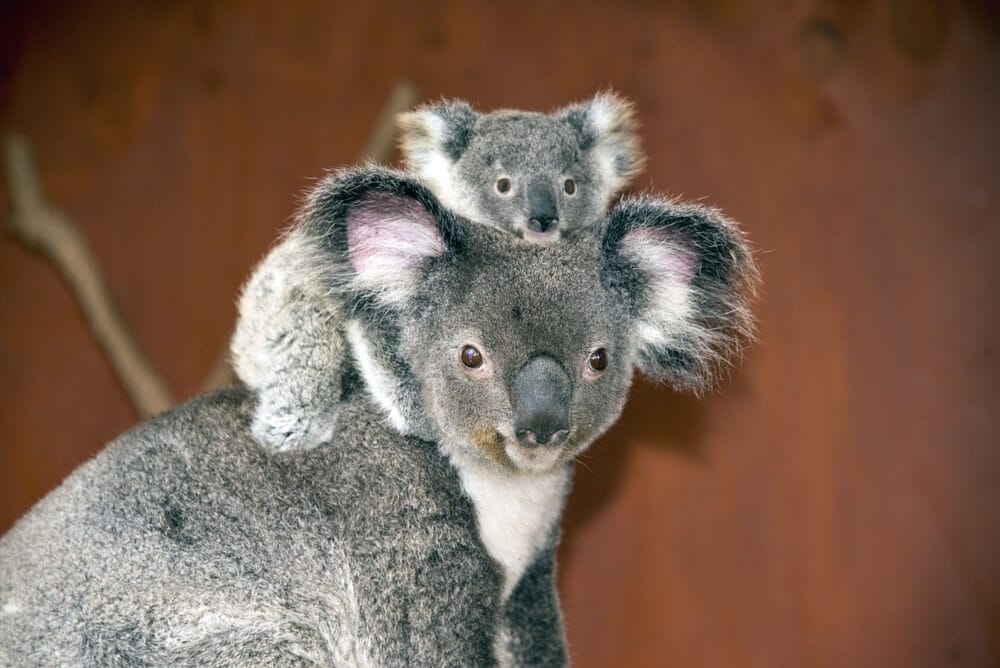
The koala joeys then take up residence in their mother’s pouch for up to six months. During this time, their main goal is to gain weight and develop into maturity. After a full month in the mother’s pouch, they still are only less than half an inch in length. Once the first six months are up, the baby koala joeys transfer from their mother’s pouch onto their mother’s back. Once there, they will spend another six months being carried around on their mother’s back. They will only go back into their mother’s pouch for nap times and feedings. Altogether, it is well over a year of gestation to fully develop and grow into adult size.
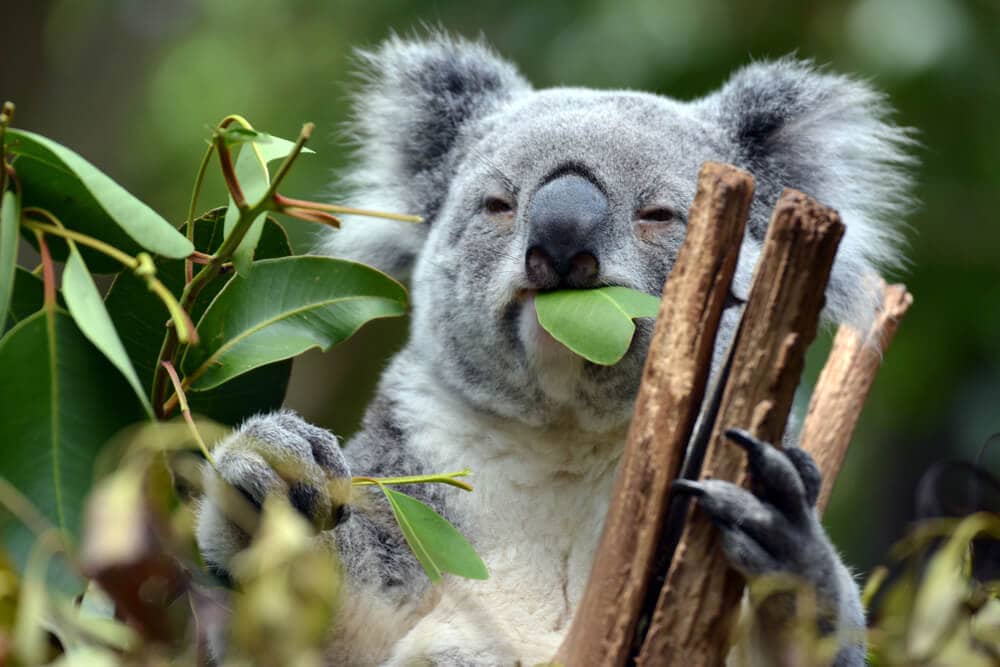
4. A Unique Digestive System
We have talked a little bit about a koala’s diet and how it is primarily eucalyptus leaves. Unlike most animals, koalas have a minimal diet and are extremely picky eaters. It might be surprising to wrap your head around how koalas can only eat one specific type of leaf. We’ve also mentioned how difficult eucalyptus leaves are. They are tough and high in fiber. To effectively consume and digest the eucalyptus leaves, koalas have their very own digestive organ. This specific organ is known as a caecum. Its primary function is to help them digest their diet of eucalyptus leaves.

The organ is critical to koalas and their survival. Generally speaking, eucalyptus is poisonous and cannot be consumed by the majority of animals and humans. If it is finished by someone who does not have the necessary components to digest it, it could have extremely harmful side effects. In koala, the caecum works to detoxify the offending chemicals. By doing this, the substances become delicious and nutritious for koalas. Interestingly, all of the eucalyptus they consume does cause koalas to smell slightly like cough drops. Without this specific organ, the koala would not benefit and survive off of these particular leaves.
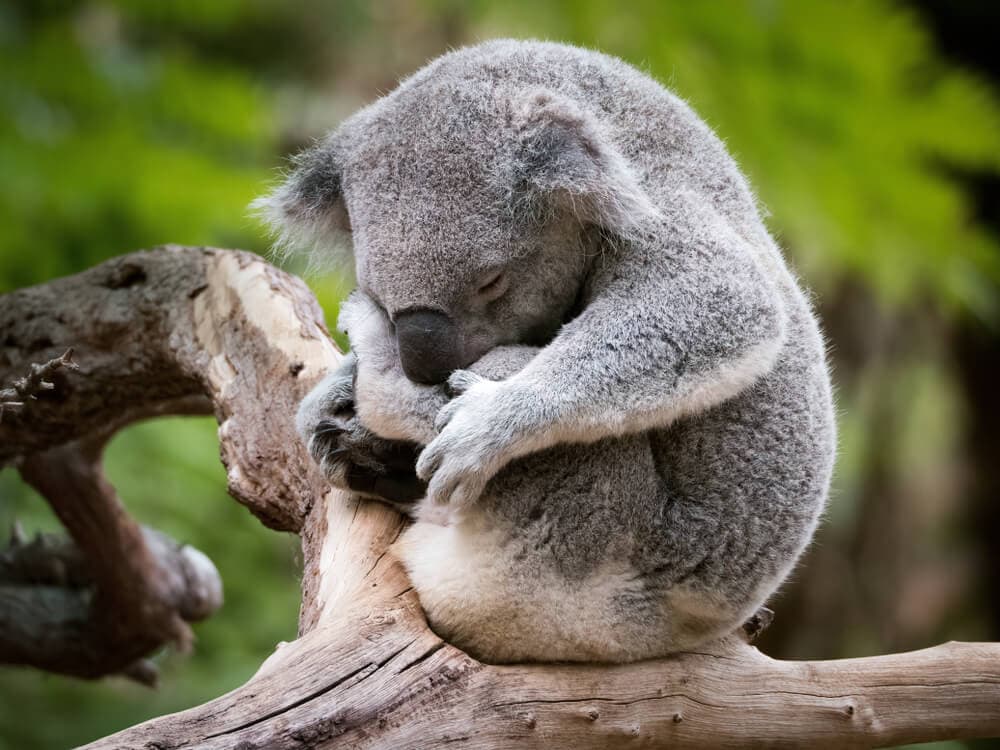
3. Just Because They Are Lazy Doesn’t Mean They Are Slow
Since koalas spend anywhere between 18 and 20 hours a day sleeping, you might assume they are lazy and slow. If they seem incredibly lazy, it’s because they generally are. When you see a koala, the majority of the time, it will be when they are up in the trees. They often appear lethargic in trees as a way to conserve their energy. Their lack of energy is due to their diet. The eucalyptus leaves are high in fiber and provide the nutrients needed for koalas, but in comparison, they are not highly nutritious. However, just because they appear sluggish, you shouldn’t count them out.
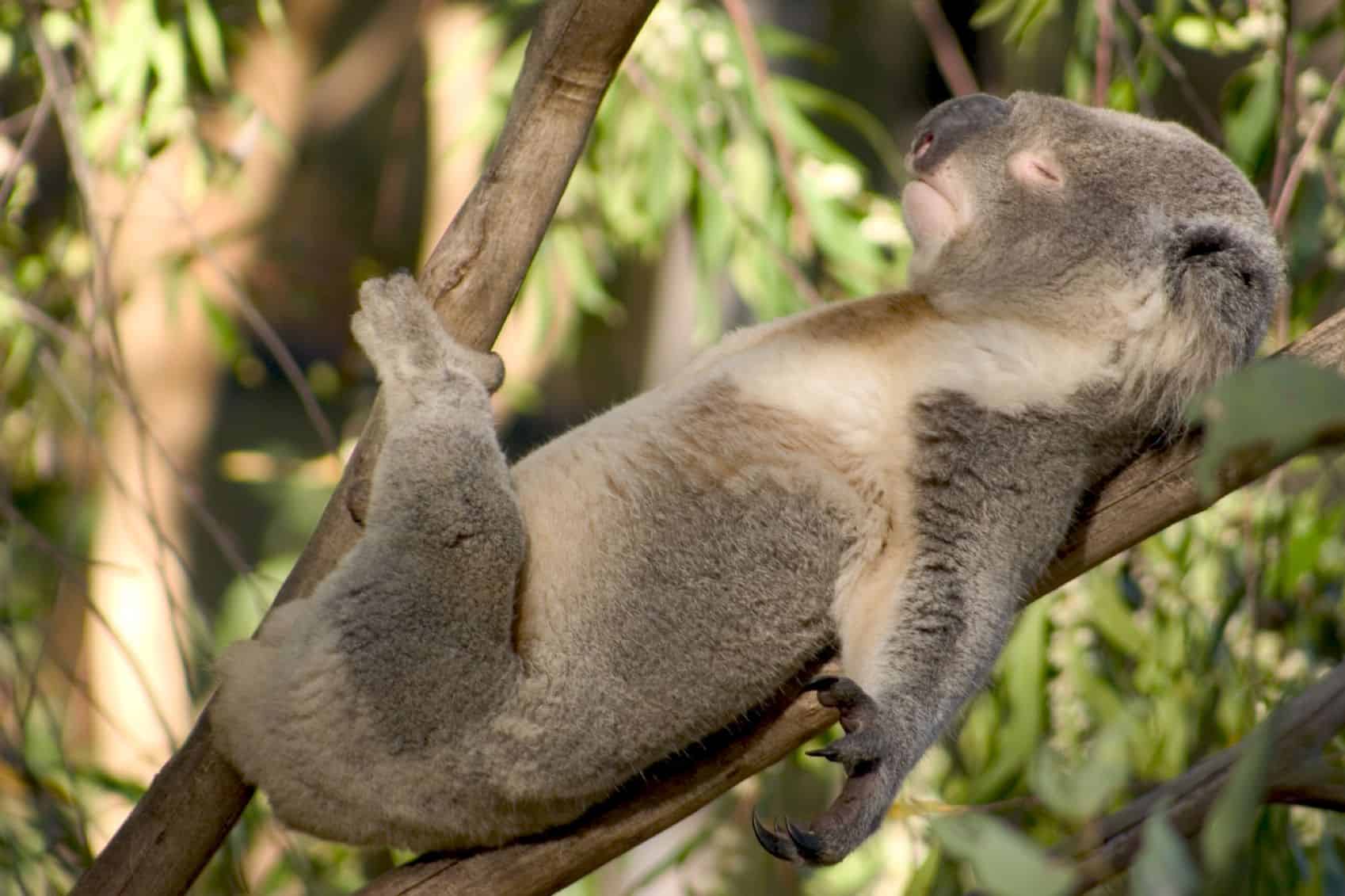
It doesn’t help that in movies, shoes, and books, koalas are often portrayed as tree-dwelling, lazy animal. They are not typically seen in action. Koalas are poorly adapted to walking on the ground, so they usually stay up in the trees where they are comfortable. However, when put into the right situation, koalas can break out at a fast pace. If they are frightened or feel threatened, koalas can break into a gallop, moving at speeds of up to 18 miles per hour. Koalas typically lead a slow lifestyle most of the time and rest a lot. However, when they move, they can be fast, agile, and mighty.
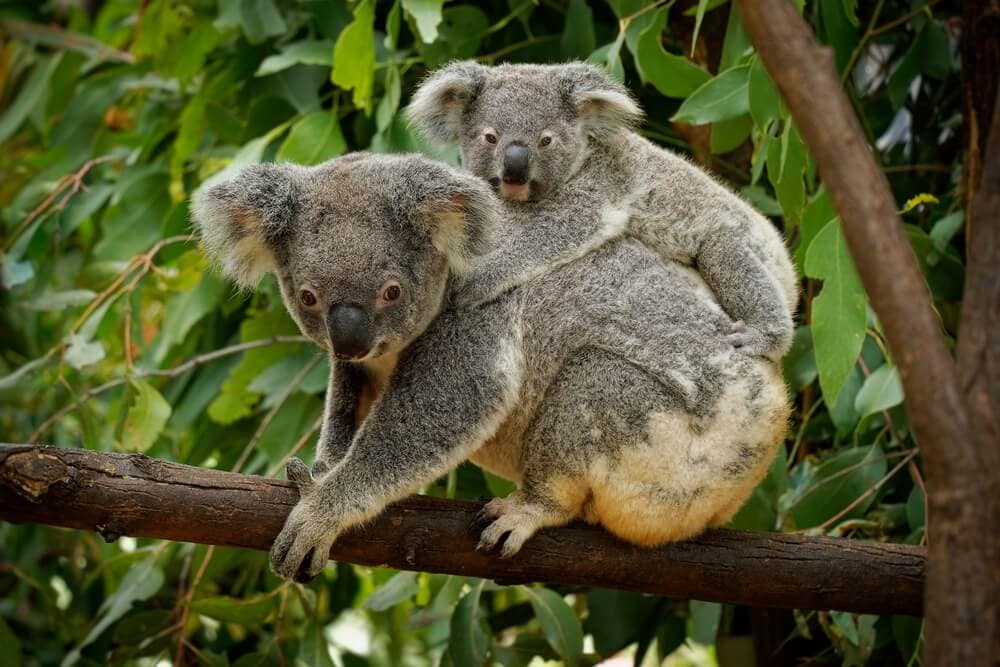
2. The Many Uses of Koala’s Butts
A koala is often viewed as a cute, cuddly, and adorable Australian animal. As we have learned, there are many aspects of the koala that are unique and critical to their survival. One of the koala’s body parts that has many uses is its’ butt. Now you might wonder what these many uses could be. The koalas’ posteriors play an interesting role in helping them survive and thrive, specifically while perched up in the eucalyptus trees. The fur on their bottoms are densely packed and acts as a cushion while they spend so much time sitting and resting upright in the trees.
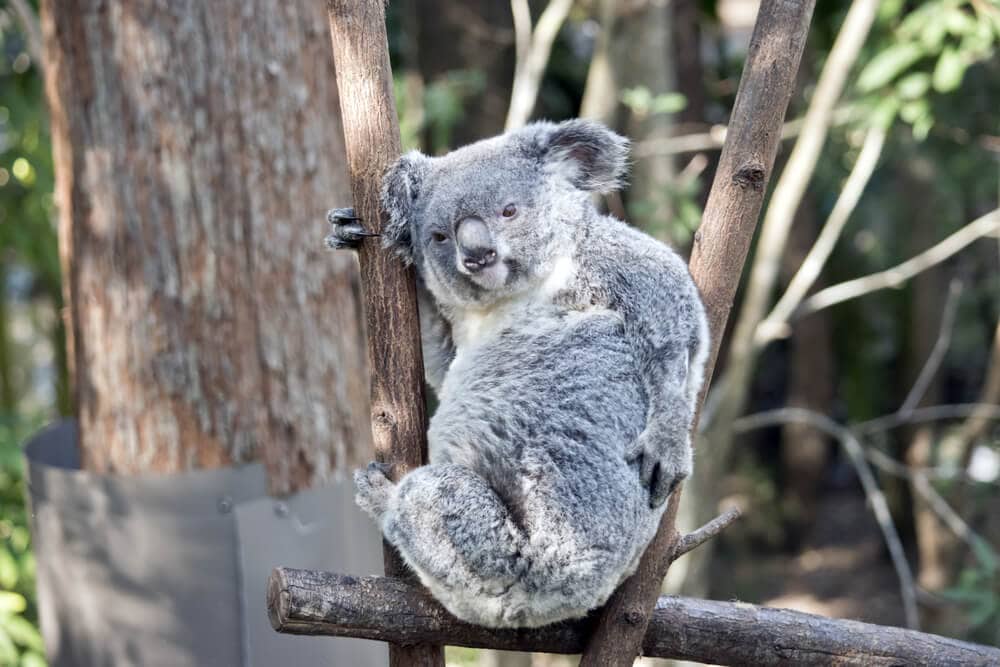
In addition to the extra padding cushion from their rear end, the end of their curved spine’s cartilage provides even more padding. All of these extra padding and cushion help koalas make the eucalyptus trees the most comfortable home. I’m sure we can all agree that if we were spending 18 to 20 hours a day sleeping in one spot, we would want to be as comfortable as we possibly could be! Another benefit to their bottom half is its appearance. The koala’s butt is white and speckled, which prevents predators from easily spotting them from the ground.
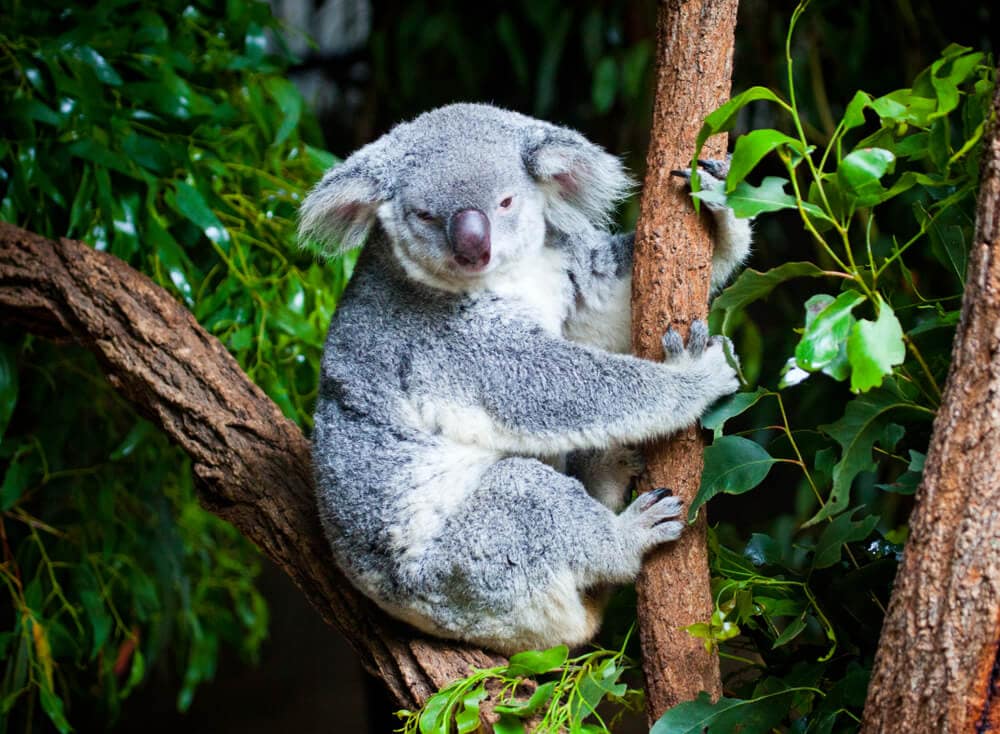
1. Koalas Are Super Stinky
It is no surprise that wild animals may not smell the best. For starters, they live in the wild and are susceptible to all the elements. They might have to be outside during the rain, cold temperatures, and dirt. Depending on their habits and nature, they may not do the best job at cleaning themselves and therefore put off a little bit of an odor. Koalas are no exception. They have been known to have a bit of a distinctive scent, at least the males do. That doesn’t mean that females or juvenile koalas don’t smell as well, but they may have a very different smell.

Females and juvenile koalas tend to smell more like eucalyptus cough drops. That is mostly attributed to their diet of eucalyptus leaves. In comparison, male koalas have been said to put off an odor that is pungent compared to eucalyptus leaves. Mature males tend to have a more pungent smell because of their distinguished scent glands. The males will rub their chest up against trees to mark their territory and attract females at breeding time. The scent gland produces a strong, musky odor. Besides, koala joeys are taught to eat different species of trees, so they have a balanced diet and because other leaves act as a natural intellect repellent.

